


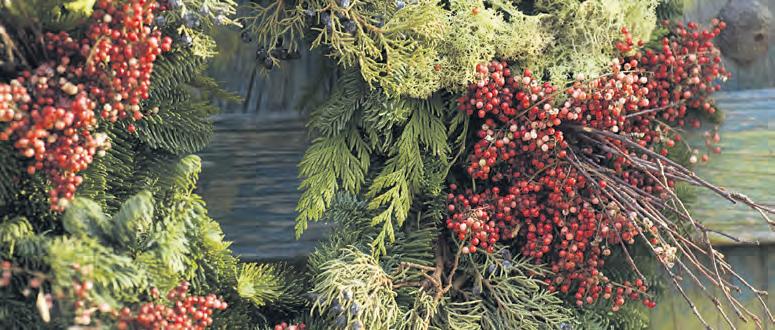

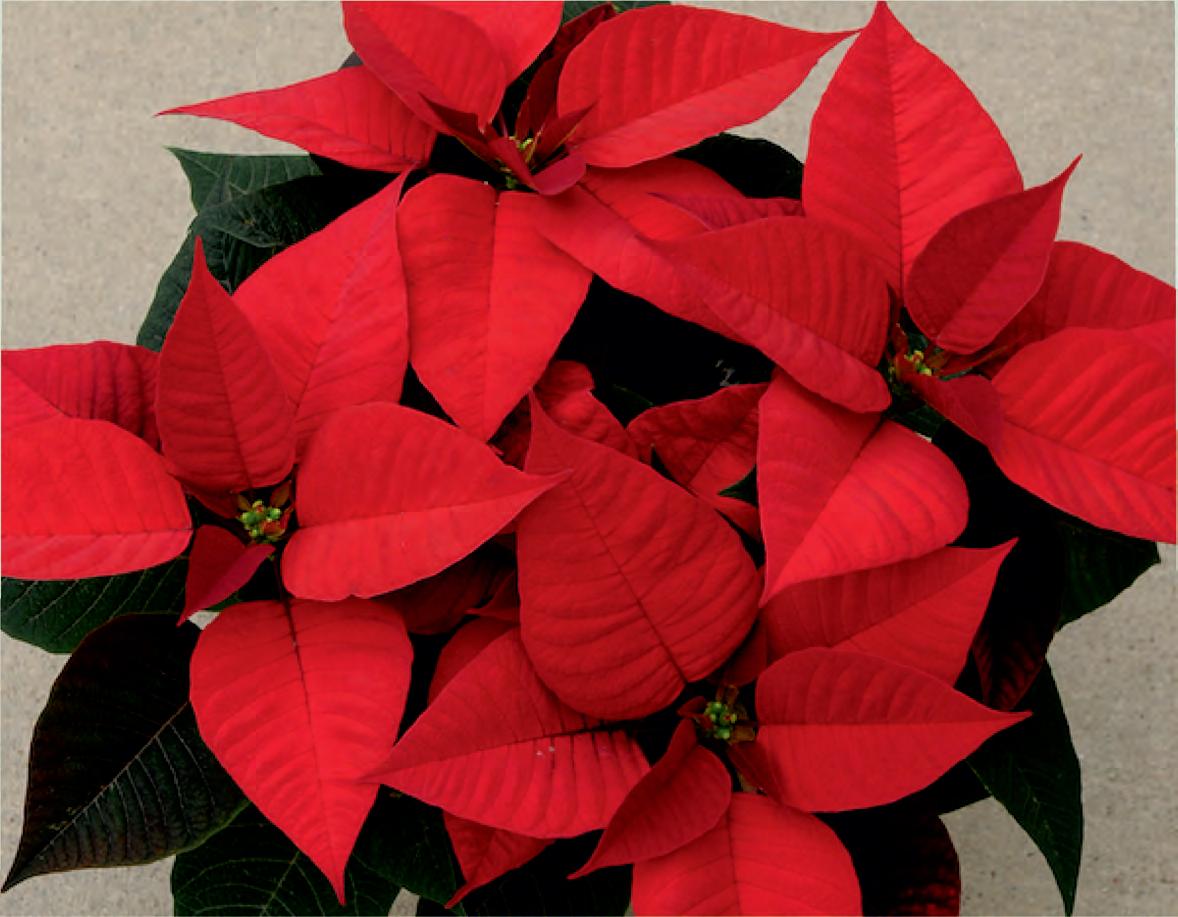

















Christmas at Dyrham Park promises to again be very special this year as the National Trust Garden adopts a theme from Tudor times up to the new Millenium.
The house will be decorated for Christmas from five different eras to take visitors back on a nostalgic journey through time. There will also be a children’s trail through the parkland, an adult trail in the garden, choirs in the church, a giant wreath and wreath-making workshops. Running daily from 10am to 4pm (last entry 3pm) from 21st November to 4th January. Closed 24th and 25th December. Normal entry charges apply.
Dyrham Park Dyrham, Bath SN14 8HY

The Christmas Market returns to Heritage House on 21st and 22nd November from 9am to 5pm– a wonderful way to discover considered gifts for everyone on your list. Immerse yourself in the spirit of the season with seasonal food and drink, festive demonstrations and more. Tickets cost £25 and you can get into the spirit of the season with festive food and drink demonstrations and more. Tickets include a glass of fizz or a non-alcoholic alternative on arrival.
Daylesford Organic, Daylesford Nr Kingham Glos GL56 0YYG

Care UK, the most awarded care home provider for the last four years ,has five outstanding rated homes in the Cotswolds. They are part of a network of 160 homes across England, Wales and Scotland which have built up an impressive reputation for transparency over care quality and fees.
The Cotswold’s based homes are Highmarket House, Millers Grange, Sandfields, Scarlet House and Seccombe Court, where highly trained teams are experts in providing high quality care from residential and dementia care, to short term care. The purpose-built homes offer luxurious facilities, including a coffee shop, hair salon, cinema and beautiful landscaped gardens.
Staff offer support to continue living residents life the way
Wrapping up warm and getting out to enjoy a visit to an early spring garden is a real tonic after the long days of winter - and a visit to one of the gardens opening early in 2026 for the National Garden Scheme really fits the bill.
“Getting out into a garden or green space in the winter is a fabulous way to boost depleted energy levels,” says the new chief executive of the National Garden Scheme, Dr Richard Claxton.
After more than 30 years of opening for the National Garden Scheme, HOME FARM, Newent Lane, Huntley GL19 3HQ is opening for the last year for the NGS on Sundays 25th January and 8th February, 11am-4pm both days.
Set in elevated position with exceptional views, there’s a one mile walk through woods and fields showing carpets of spring flowers. Home Farm’s enclosed garden has a fern border, sundial and heather bed, white and mixed shrub borders.
torillfreeman@gmail.com.
TRENCH HILL, Sheepscombe GL6 6TZ opens for the NGS on Sundays 8th and 15th February from 11am until 4pm each day. There’s approximately three acres set in a small woodland with panoramic views, a variety of herbaceous and mixed borders, rose garden, extensive vegetable plots, wildflower areas, plantings of spring bulbs with thousands of snowdrops and hellebores,

woodland walk, two small ponds, waterfall and larger conservation pond.
Admission £5, children free. Home-made teas available, gluten free and dairy free usually available. Visits for the NGS are available by arrangement with the owners between 11th February and 14th September for groups of up to 35. Coaches welcome but agreed with the owners because of size. Contact Celia and Dave Hargrave, 01452 814306, celia.hargrave@btconnect.com
Home Farm, Newent Lane, Huntley

Admission £4, children free. Stout footwear is advisable, and there are two delightful cafés within a mile. Dogs allowed but the garden is not wheelchair accessible. Home Farm also opens for the NGS by arrangement from January to April for groups of up to 30. Contact the owner, Mrs T Freeman, on 01452 830210 or email:

they choose. Care UK learn all about your interests and preferences so they can create a fully personalised lifestyle plan that you’ll enjoy.
Trust them to care
Highmarket House, Millers Grange, Sandfields, Scarlet House and Seccombe Court care homes are part of Care UK, the country’s most awarded large care provider. W they have been delivering high-quality, person-centred care for over 40 years.
To find out more, call 0330 822 1865 or visit www.careuk.com
The Cotswolds homes to look out for are:
Highmarket House, N Bar Place Banbury, 0X16 OTD . Millers Grange, Curbridge Rd, Witney 0X28 5HR Sandfields, St George’s Rd, Cheltenham GL50 3EL Scarlet House, 123 Westward Rd, Ebley, Stroud GL5 4SP Seccombe Court, Gardener Way, Banbury OX17 3FW
Anyone who thinks that gardening begins in the spring and ends in autumn is missing the best part of the whole year; for gardening begins in January with the dream. JOSEPHINE NUESE
The beautiful Arts and Crafts garden at COTSWOLD FARM, Duntisbourne Abbots GL7 7JS opens for the NGS on Saturday 14th and Sunday 15th February between 11am and 3pm both days. The garden overlooks a quiet valley, with descending levels with terraces designed by Norman Jewson in the 1930s.
Admission £7.50, children free. Picnics welcome. Wheelchair access to main terrace only (no wheelchair access to WCs). We advise if possible, checking before starting out on a journey to any private garden, as bad weather or other circumstances can force cancellations.
ALGARS MANOR, Station Rd, Iron Acton, South Gloucestershire, BS37 9TB opens with Algars Mill for the NGS on Sunday 22nd February from 1pm until 4pm. Algars Manor has two acres of woodland garden beside the River Frome, with a mill stream, native plants mixed with collections of 60 magnolias and 70 camellias, other unusual trees and shrubs, daffodils, snowdrops and other early spring flowers. Partial wheelchair access, dogs allowed on short leads.
ALGARS MILL, Frampton End Rd, Iron Acton, Bristol, South Gloucestershire BS37 9TD is also a two-acre woodland garden, bisected by the River Frome, with spring bulbs, shrubs, and wild Newent daffodils. The millrace still runs through the 300-400year-old mill house. Combined admission £7, children free. Tea and biscuits at Algars Mill, where there’s wheelchair access and dogs are also allowed.
www.ngs.org.uk
A garden is a grand teacher. It teaches patience and careful watchfulness; it teaches industry and thrift; above all it teaches entire trust. GERTRUDE JEKYLL
The Alpine Garden Society’s early Spring plant show and fair is on Saturday 21st February 2026 at Pershore High School, Station Road, Pershore WR10 2BX

Open from 10.30am (show hall opens approx. 11am) until 3.30pm. Admission £4, AGS members free.
• Specialist nurseries selling alpines, bulbs, and small hardy plants.
• Exhibits from the West and Midlands Iris Society.
• Artistic exhibits.
• Hot and cold food and drink.
• Plenty of free parking on site.

Come and see superbly grown small hardy plants on the show benches as well as non-competitive exhibits, and plants to buy.
Get your Spring started with this uplifting annual flower show.
Make this a date for your diary. Contact Gail Devries email: gail.devries@agsgroups.org www.alpinegardensociety.net






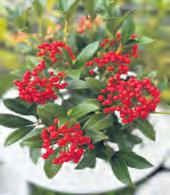

A specialist plant centre situated in an array of farm buildings, with an abundance of beautiful plants to create your own unique garden.



Chapel Road, Over Peover, Knutsford, Cheshire. WA16 9RA
0800 046 7443 sales@chrysanthemumsdirect.co.uk
2026 Catalogue available online now. The widest range available in the U.K. with over 400 cultivars, including a choice selection of hardy garden (Korean) varieties, plus many others suitable for the garden or exhibition. New for 2026 - Introducing Green Mist Incurve –a bold new addition to our best selling Mist Series. With it’s vivid green blooms, it brings energy to borders and arrangements alike. Eye catching, elegant and utterly unique. New



Gardens throughout the Cotswolds turn their focus on the festive season and illuminations over the next few weeks, with ever more dramatic and magical offerings in the build up to Christmas.

Set against the backdrop of Sudeley Castle, the Spectacle of Light is a winter evening experience which runs from 21st November to 30th December and transforms the castle’s historic grounds into an illuminated trail. The event marks its tenth anniversary this winter, and the theme is a legendary journey through the tale of King Arthur.
Visitors walk a timed slot from early evening (typically around 4.45pm) following a one-hour plus trail through the gardens and grounds of the castle. The route takes advantage of the castle setting, historic stonework and landscaped gardens to deliver dramatic contrasts of light and shadow. As well as the light displays, there’s festive food and drink available, mulled wine, hot chocolate, warm doughnuts and other treats.
Free car parking, accessible paths and lots of advance ticket information. Dress warmly, include sturdy footwear, children under three go free; assistance dogs only; and book early as slots sell out.
Adult prices from £19.30. More details on https://sudeleycastle.co.uk/events/spectacle-of-light-2025.
Sudeley Castle & Gardens, Winchcombe, Gloucestershire, GL54 5LP

At Blenheim Palace, the annual festive highlight is the Illuminated Light Trail which takes place from 14th November to 3rd January through its parkland, offering a grand scale experience of light, sound and architecture.
Visitors follow a timed route that winds its way through gardens and park trees and finishes in the palace’s Great Court and Christmas market.
Highlights of recent years include the so-called “Tunnel of Light” with over 100,000 LEDs, a scented Fire Garden, laser meadows, and dramatic water and projection displays on the lake and terrace.
Dogs are not permitted on the trail (other than registered assistance dogs) tickets are timed and capacity limited; advance booking is recommended, and parking must often be pre-booked.
Blenheim Palace Woodstock OX20 1PS

Westonbirt Arboretum’s Enchanted Christmas from 28th November to 31st December invites visitors on a milelong illuminated trail through the trees, offering a quieter, more natural light experience in contrast to some big stately-home trails.
Along the route there are interactive light as well as steady spotlighting on tree trunks and dramatic treescape illumination. After the trail walk, visitors can enjoy the ‘Christmas Village’ area: festive food and drink kiosks, fairground rides and family-friendly amenities. The trail is pushchair and wheelchair friendly and there are ‘relaxed sessions’ specifically for people with additional needs (for example quieter lighting, no smoke effects) on certain dates.
Westonbirt, The National Arboretum, Tetbury www.forestryengland.uk/westonbirt-the-national-arboretum


An award-winning rainforest garden has opened at Bristol Zoo Project, bringing rainforest landscapes to the Bristol area for the first time. Now set within a site seven times larger than its original RHS Chelsea Flower Show footprint, the Wildlife Trusts’ British Rainforest Garden is a showcase of The Wildlife Trusts 100-year Temperate Rainforest Programme.
The rainforest garden features a canopy of native trees created from hazels, field maples and silver birch, with lush undergrowth, lichen-encrusted trunks, honeysuckle and ivy.
The garden is wheelchair accessible with seating, enabling visitors to soak up the experience, and signage about temperate rainforests – one of the UK’s rarest and most precious habitats. Designed by Zoe Claymore and sponsored by grant-giving charity Project Giving Back, the garden’s first outing was at RHS Chelsea Flower Show, where it won a coveted RHS People’s Choice award in the All About Plants category.
The Wildlife Trusts are supported by the UK’s leading diversified insurer Aviva, whose backing has enabled the charity to share the rainforest story on a national stage.
The garden has been carefully rehomed by Bristol Zoological Society, a conservation and education charity which runs Bristol Zoo Project. It can be found in the zoo’s Sanctuary Garden.
Craig Bennett, chief executive of The Wildlife Trusts, says: “Our beautiful rainforest garden richly deserves this opportunity to shine again. I can’t think of a better new home for it than this wonderful zoo, where it’ll have a chance to mature and grow and where generations of children will be able to play in it and learn about our natural world.”
Bristol Zoo Project, Blackhorse Hill, Bristol BS10 7TP
The Christmas Cotswold Fair will be celebrating its 40th year this year and is the popular independent Cotswold festive event bringing together over 220 hand selected boutiques under one roof. It is held within the estate of Todenham Manor Farm and offers a vibrant festive atmosphere showing casing great British brands, unique gifts, artisan products as well as an enviable list of live workshops, demonstrations and gourmet food offerings. All profits go to the partner charity Well Child, the UK’s national children’s charity for seriously ill children.
Country Gardener magazine will be back for the start of a NEW 2026 GROWING SEASON with the magazine available from stockists on Saturday 21st February
Find your nearest stockist www.countrygardener.co.uk/magazine/stockists

For a full list of brands, workshops and demonstrations, and to buy tickets visit www.cotswoldfair.com .The event runs from Monday 10th November 5.30pm to 9.30pm, Tuesday 11th and Wednesday 12th November, 9am to 5pm and Thursday 13th November, 9am to 4pm.
Todenham Manor Farm Estate, Moreton-in-Marsh, Gloucestershire GL56 9NW

Chard is one of the few edible plants which is equally at home in a vegetable bed or a flower border. At the height of summer, it outshines any other vegetable with its brightly coloured stems veins and dramatically contrasting leaves.
Chard is also a tough little plant.
Swiss chard is an easy-to-grow, beautiful, and nutrientdense vegetable that deserves a spot in every home garden. Whether you’re drawn to its vibrant colours, its tolerance to a range of climates, or its culinary flexibility, chard is a reliable green that can be harvested over a long season and used in countless delicious ways. From garden to table, it’s a true garden treasure.
Swiss chard (Beta vulgaris subsp. vulgaris) is a leafy green vegetable that belongs to the beet family. Often recognised by its glossy green leaves and vibrant stems in colours like red, yellow, orange, and white, Swiss chard is both an ornamental and edible plant. It’s prized not only for its beauty in the garden but also for its nutritional value and culinary versatility. Growing chard is relatively easy, making it a popular choice for beginner gardeners and seasoned growers alike.
Swiss chard is a cool-season crop but is also quite heattolerant compared to other leafy greens. It can be grown in both spring and autumn, and in many areas, it will even survive mild winters.
Sow seeds two to three weeks before the last expected frost. In milder climates, Swiss chard can be planted in late summer for a winter crop.
Swiss chard prefers well-draining, fertile soil rich in organic matter. Aim for a pH between 6.0 and 7.0. Work compost or well-rotted manure into the soil before planting for a nutrient boost.
Sow seeds half an inch deep and about two inches apart in rows 12–18 inches apart. Once seedlings are about four inches tall, thin them to about six inches apart. Thinned seedlings can be transplanted or eaten as baby greens. Swiss chard seeds are seed clusters, so multiple plants may sprout from a single;’seed.’
Keep the soil consistently moist but not soggy. Swiss chard benefits from regular watering, especially in hot or dry conditions. Apply a balanced fertiliser every six weeks if needed, especially in poor soils.
Swiss chard is relatively pest-resistant, but it can occasionally be affected by aphids, leaf miners and slugs
and snails. To prevent disease, avoid overhead watering, and practice crop rotation.
You can begin harvesting Swiss chard as soon as the leaves are large enough to eat. Cut outer leaves about an inch above the ground and leave the central growing point intact. This ‘cut-and-come-again’ method allows the plant to keep producing for weeks or even months.
Swiss chard comes in a variety of cultivars, each with its own stem colour and flavour nuances. Here are some popular types:
‘Bright Lights’
This colourful variety features stems in red, yellow, orange, pink, and white. It’s visually stunning and often used as an ornamental edible in gardens. The flavour is mild, slightly sweet, and tender.
‘Fordhook Giant’
An old and reliable cultivar, ‘Fordhook Giant’ has broad, dark green leaves and thick white stems. It’s known for its vigour, productivity, and cold tolerance.
‘Rhubarb’ Chard
This variety resembles rhubarb due to its deep red stems and dark green leaves. The stems are tender and the flavour is slightly earthy.
‘Ruby Red’ or ‘Red Chard’
With vibrant crimson stalks and deep green leaves, this cultivar is both flavourful and visually appealing. It’s often used in salads or sautéed dishes.
‘Lucullus’
A pale-stemmed variety with crinkled light green leaves. It has a milder taste and is especially heat-resistant, making it ideal for summer growing.
Swiss chard is incredibly nutritious. It’s high in:
• Vitamins A, C, and K
• Magnesium
• Potassium
• Iron
• Antioxidants like betalains and flavonoids
Low in calories but rich in fibre and nutrients, it’s a great addition to a healthy diet.

• Swiss chard is a versatile green that can be eaten raw, sautéed, steamed, stir-fried, baked, or used in soups and stews. Both the leaves and stems are edible, though they require slightly different cooking times.
• Wash thoroughly: Swiss chard can trap dirt in its crinkly leaves. Separate stems from leaves: since stems take longer to cook, cut and cook them separately for even texture.
• Young, tender chard leaves can be eaten raw. They add a slightly earthy and tangy flavour to salads. Try mixing them with milder greens like spinach or arugula.
• One of the most popular ways to enjoy Swiss chard is sauteed.
• Heat olive oil in a pan with garlic or onions. Add chopped stems first, cook for a couple of minutes. Add the leaves, sauté until wilted. Season with salt, pepper, lemon juice, or chilli flakes.
• Swiss chard can be gently steamed and served with a drizzle of olive oil and a squeeze of lemon. Braising with broth, white wine, or tomatoes adds extra flavour.
• Chopped chard makes a great addition to minestrone, lentil soup, or any vegetable stew. It holds its shape better than spinach and adds colour and nutrients.
• Swiss chard is excellent in gratins, quiches, and casseroles. Combine with cheeses like feta, ricotta, or Parmesan for a savoury filling.
• Use large chard leaves in place of grape or cabbage leaves to make stuffed rolls with rice, herbs, and ground meat or lentils.


If you would like to share your gardening views, thoughts and suggestions write to us at editorial @countrygardener.co.uk
One of the pleasures I have found late in life is gardening with my two grandchildren aged three and five. It has been a great surprise and their interest in getting hands dirty and growing things has re kindled my interest in being outdoors. Some of my best memories this glorious Somerset summer have been made with muddy hands and curious questions. Kids bring wonder to gardening— watching a bean sprout is pure magic to them and there’s a real fascination in getting their hands full of compost!
Give them their own little patch, or even just a pot. Let them pick seeds (sunflowers, peas, and strawberries are great choices). Don’t worry about perfection, just celebrate exploration. Gardening teaches patience, responsibility, and joy. What more could we ask for? With dirt under my nails and hope in my heart, Grandpa Joe Dulverton
Here’s my method of defeating bulb eating grey squirrels for those planted in pots. Plant the bulbs in the ordinary way and then place a piece of turf over each pot so it fits perfectly. When the bulbs start to show raise the turf by using sticks about eight inches long making a little hat under which the bulbs can grow. Squirrels won’t get under the turf roof and once it is removed the bulbs are too big for them to be interested.
Vivien Foot Winchester
If you’ve grown tomatoes, you know the highs (first ripe fruit!) and lows (blossom end rot, blight anyone?). It has been in my opinion a great growing season for tomatoes. My great success has been the Beefsteak varieties which fruited early and ripened wonderfully, and each one seemed to last a week! Tomatoes are heavy feeders, give them rich soil, compost tea, and steady water and what can go wrong. I learnt from a very young age from my father that the biggest mistake we can make is inconsistent that watering causes split fruit and rot. Talking about my father he taught me to stake early, prune wisely, cut back the leaves and keep an eye out for hornworms (a blacklight flashlight works wonders at night!). When it works, nothing beats the taste of a sun-warmed tomato right off the vine.
Ralph Phipps Dorchester

Trees are superb for wildlife, good for trapping pollutants, enhancing hard spaces and filtering rainfall, increasing house values and more. Yet for the past few decades urban tree planting has waxed and waned. Fear of tree roots causing subsidence, fear from falling branches and councils having to look after such flora means we are at a critical point when many of the trees planted in my home city Exeter are reaching maturity and need replacing. Yet I see not enough activity. There are plenty of out- of-town tree planting schemes but who is looking after our urban area? Campaigns are trying to insist on tree planting being an aggressive strategy on the many new housing estates being built but it seems half hearted to me. Streets need trees and we need to remember that.

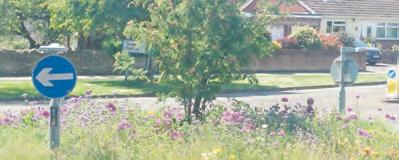
We have just come back from a touring holiday in northern France and one of the things which amazed us is how creative the French are with livening up roundabouts. Even small villages seem to find the flair to do something wonderful with garden design and plants on roundabouts. I wish their creativity could be exported to the drab roundabouts of this country.
Pam
Radcliffe sent by email
There’s something truly magical about turning a patch of earth into a living, breathing garden. If you’re just getting started, don’t be overwhelmed. Begin small. A few raised beds or containers can be a perfect launchpad. Pick a sunny spot, test your soil (your local extension service can help), and choose easy starters like tomatoes, herbs, and marigolds. Remember: healthy soil grows healthy plants. Work in compost generously and water deeply but less frequently. Above all, be patient. A garden is not built in a day—but every day spent in it is worthwhile. Yours in muddy boots,
Margot Arnold Winchester
I’d like to share a story with your readers - I had an aphid outbreak on my roses in June. It looked like a real disaster, and I worried for my beloved plants. Within a week of planting sweet alyssum, I saw ladybug larvae feasting like royalty. Problem solved organically. Nature always knows what to do… if we let her. Forget pesticides and let nature do the dirty work. Invite beneficial insects like ladybugs, lacewings, and hoverflies to your garden. How? Grow flowers like yarrow, alyssum, and dill. Leave a shallow water dish out and avoid spraying chemicals that can harm the good guys.
Edna Harlow Bideford

Did you know your plants can be great friends—or terrible neighbours? Companion planting is like matchmaking for your garden. Tomatoes love basil (yes, even in the ground!), while beans thrive near sweetcorn but clash with onions. One of my favourite combinations is carrots and leeks—together, they repel each other’s pests. Nasturtiums keep aphids away from nearly everything, and marigolds? They’re little guardians against nematodes. It’s a bit of a dance, but once you learn who likes whom, your garden will thrive in harmony.
Bath
Not every garden basks in full sun, but shade doesn’t mean dull! I have had to learn that in my garden where there are trees and buildings which cast shadows over the growing areas. Hostas, ferns, astilbe, and heucheras thrive in low light. For a pop of colour, try impatiens or begonias. The trick is to understand your shade: is it morning sun and afternoon shade, or dappled under trees? I can adjust my plants accordingly. And it has been a case of having to and adapting to the horticultural cards I have been dealt with this garden. Oh and mulch well, shade gardens love moisture. Shade is not a setback; it’s an invitation to a different kind of beauty.
Nora Grahame Minehead


Mark Hinsley meets up with some venerable places and memorable trees on a few casual days travelling in the Cotswolds
Whilst Stourhead remains for me the absolute jewel of English Landscape Gardens, on an expedition to track down long lost ancestors, I found another stunning place –Chatsworth.
The long-lost ancestor I was looking for was three times great grandfather John Robertson.
John was an architect who first worked with John Loudon designing cottages for his catalogue and then with Joseph Paxton at his Chatsworth office working on many projects in and around the estate. There is evidence to suggest that John undertook the first plan drawings from sketches of Paxton’s Crystal Palace.
Whilst working at Chatsworth, John lived in Baslow on the edge of the estate. He married Emma Farrer, the granddaughter of the Rev John Farrer, who was vicar of the church in Baslow. I found his grave – my five times great grandfather in the churchyard. John Robertson’s son, Kenneth, worked as a joiner and a footman at Chatsworth for the Duke of Devonshire. So off to Chatsworth we went.
Before we had even left the carpark I spotted three fabulous veteran oaks. From 1750 to 1765 Lancelot ‘Capability’ Brown had placed his mark on the landscape surrounding Chatsworth in his usual style. However, these oaks are much older than that, my estimate was 500 – 600 years, which would make them a remnant of the medieval Deer Park upon which Brown was let loose. Brown had a bit of a reputation as a landscape vandal when it came to existing features, but he left these majestic old beauties alone. It was nearly 100 years before great-great-great-granddaddy John left his thumbprint on the place. The orangery, on the extreme right of the Chatsworth House photo is attributed to him.
Country Gardener occasionally publishes articles about water features. Chatsworth has a few of these. Most spectacular is the ‘Emperor Fountain’ installed in 1844 for an intended visit by the Tsar of Russia which actually never happened. Apparently Stanway House in the Cotswolds has the tallest gravity fed fountain in the world achieving a jet of some 300 ft. However, the one at Chatsworth is no water pistol, being reputed to




have once been of similar height but these days contents itself with a modest 200ft. The fountain is fed from a pond high up in the adjacent hillside.
Those of you who remember the title sequence for ‘The Champions’, might be crying "What about the Jet d’Eau in Lake Geneva?” It is much taller, but it is pumped. In fact, it was originally nothing more than a pressure relief valve for the local pumped water system.
Anther common favourite of our esteemed publication is rock gardens. Rock gardens often feature coniferous trees planted amongst the stones. Chatsworth is no different, except their conifers are giant redwoods!
Chatsworth is a truly stunning landscape and well worth a visit if you fancy a long weekend away.
If you have come this far, you ought to take a side trip of a few miles to St Helen’s Church in Darley Dale to have a look at their yew. People have been measuring it, drawing it and photographing it since 1782. It has a girth of 33ft and must be 2,000 years old if it is a day.
I had my photo taken alongside it in an attempt to look thin.
So, dear reader, I hope you don’t mind me writing an article about my holiday snaps, but the landscapes and the trees were genuinely special and well worth a visit.
Also, you are not far from Bakewell, and they really do make some exceedingly good cakes!
Mark Hinsley, of Mark Hinsley Arboricultural Consultants Ltd, offering tree consultancy services. www.treeadvice.info

It had to be yew, wonderful yew!
Dorset based gardener Andrew Porter, a confirmed evergreen enthusiast looks at the yew and argues it is a varied and flexible genus with great scope for wider use in the garden Yew
The yew is a plant of paradoxes—ancient yet adaptable, slow-growing yet regenerative, sombre yet beautiful. From its sacred associations in medieval churchyards to its precise geometry in formal gardens, the yew has been woven into the fabric of human culture for millennia.
As a hedge, it provides structure, privacy, and longevity unmatched by other evergreens. As a medium for topiary, it offers limitless creative potential. Through propagation by cuttings or seed, it continues to be passed down through generations, forming living monuments that outlast their makers.
Proper planting, pruning, and care ensure that these venerable plants continue to grace our landscapes for centuries to come. The art and science of growing yews remind us that patience and respect for natural growth yield the most enduring beauty—living architecture shaped by time itself.
Yews, belonging to the genus Taxus, are among the most enduring and iconic plants in European horticulture. Revered since ancient times for their longevity, adaptability, and rich dark-green foliage, yews have long been associated with sacred sites, churchyards, and grand formal gardens. Their dense evergreen habit and ability to withstand hard pruning have made them indispensable in landscape design—particularly in the creation of hedges and topiary.
The genus Taxus belongs to the family Taxaceae and includes several species native to Europe, Asia, and North America. The most familiar to British and European gardeners is Taxus baccata, commonly known as the English or European yew. Other important species include Taxus cuspidata (Japanese yew), Taxus brevifolia (Pacific yew), and various hybrids such as Taxus × media, a cross between the English and Japanese yews, valued for its hardiness and adaptability.
Yews are slow-growing, long-lived, evergreen conifers with needle-like leaves that remain a deep green throughout the year. They are dioecious, meaning that male and female flowers occur on separate plants. The female trees produce distinctive red, fleshy structures called arils that surround a single seed. Although the aril is not poisonous, the seed within—as well as all other parts of the plant—is highly toxic due to the presence of alkaloids known as taxines.
The timber of yew is dense, fine-grained, and resilient, historically prized for crafting longbows and fine furniture. However, in modern horticulture, its greatest value lies in its ornamental qualities: its tolerance of pruning, shade, and pollution, and its extraordinary longevity make it one of the most reliable plants for structural planting. Though primarily ornamental, yews provide environmental benefits. Their dense foliage offers year-round shelter for birds. Yew hedges can act as effective windbreaks, reduce noise, and capture airborne pollutants—making them valuable features in both rural and urban landscapes.
However, caution is warranted in areas grazed by livestock, as fallen leaves or clippings can be toxic. Careful management ensures that their beauty coexists with ecological responsibility.

Yews have been cultivated for centuries as architectural plants. Their dense, dark foliage contrasts beautifully with lighter deciduous plants, stone, and lawn. From the clipped geometric forms of Renaissance gardens to the romantic yew walks and churchyard hedges of the 18th and 19th centuries, yews have played a central role in European garden design.
Yews’ rich green foliage provides a sense of permanence and gravity to a landscape. The uniformity of texture and colour enables designers to use them as living walls, backdrops, or sculptural forms. Because they can be pruned into clean lines or fantastical shapes, yews bridge the gap between horticulture and art. Their slow growth ensures that once a form is established, it remains stable and requires relatively modest intervention to maintain its shape.
The association of yews with churchyards across Britain arises partly from their symbolic connection with immortality and resurrection—qualities drawn from their evergreen nature and ability to regenerate even from old wood. In medieval times, churchyards were among the few enclosed spaces where livestock could not graze, providing protection for young yews. Over time, these trees became fixtures of sacred landscapes.
Today, yews remain a favourite for formal gardens, urban courtyards, and rural estates.
Topiary—the art of clipping living plants into ornamental shapes—finds its most faithful ally in the yew. The plant’s small, flexible leaves, fine branching structure, and capacity to regenerate from old wood make it ideal for intricate sculptural forms.
The art of topiary dates to Roman times but reached its peak in Renaissance and Baroque Europe. Yews featured prominently in the gardens of the Italian villas, French formal parterres, and later in English estates. At Levens Hall in Cumbria, some of the oldest and most intricate topiary specimens in the world—dating from the late 17th century—are still maintained today, demonstrating the longevity of yew as a sculptural medium. Yews can be clipped into a wide range of shapes, from simple cones and spheres to complex animal figures or abstract designs.

The flexibility of yew topiary allows gardeners to combine formal geometry with artistic expression. Unlike box (Buxus sempervirens), another traditional topiary plant, yew is less susceptible to pests such as box blight or caterpillar infestation, making it an increasingly preferred alternative.
Few plants equal the yew as a hedge material. Taxus baccata is particularly valued for its dense, evergreen foliage, slow growth, and exceptional tolerance to pruning. A wellestablished yew hedge can provide privacy, shelter, and aesthetic structure for centuries. The fine, evergreen needles and closely branching habit make yew hedges among the most impenetrable living barriers and a yew hedge, once established, can last for hundreds of years.
Yews thrive in shade or full sun and can be cut back hard, even into old wood, with reliable regrowth. They tolerate most soil types, except waterlogged conditions, and withstand pollution, making them suitable for urban and rural settings alike. The dense foliage also acts as an effective windbreak and sound buffer.
Yews prefer well-drained, fertile soil with a neutral to slightly alkaline pH. Although tolerant of shade, young plants benefit from sufficient light to establish strong growth.
The best time to plant is autumn or early spring, although container-grown yews can be planted at almost any time provided watering is consistent.
Keep newly planted hedges well-watered for the first two seasons and apply a mulch of bark or compost to conserve moisture and suppress weeds.

Pruning and training
Regular pruning is essential to maintain a dense, even hedge. In the first two to three years, prune lightly to encourage branching at the base. Avoid cutting too harshly until the hedge reaches the desired height. The main trim is typically done in late summer (August or early September), with a lighter spring trim if necessary to tidy up early growth. Older or neglected yew hedges can be rejuvenated by cutting back severely into old wood in late winter. Unlike many conifers, yews will readily reshoot from old stems.

Propagation from cuttings
Propagation of yews can be achieved by several methods—seed, cuttings, and occasionally grafting. However, because yews are slow-growing and highly variable when raised from seed, vegetative propagation is preferred for horticultural purposes.
Yew seeds are contained within the red arils that appear on female plants in autumn. While propagation from seed can be rewarding for species conservation, it is rarely used for hedge or topiary production due to slow and erratic germination.
Harvest ripe arils in autumn, remove the fleshy coating, and wash the seeds thoroughly.
Propagation from semi-ripe or hardwood cuttings is the standard method for producing uniform plants. Taken from late summer to early autumn, 8–10 cm shoots of current season’s growth are ideal. Taken in late autumn or winter, using ripened shoots about 15–20 cm long. Remove lower leaves and make a clean cut below a node. Dip the base in a rooting hormone powder or gel to encourage root formation. Insert the cuttings into trays or pots filled with a mixture of equal parts sharp sand and peat or compost. Maintain high humidity under mist or in a closed propagator, with bottom heat around 15–18°C.Rooting typically occurs over 3–6 months; cuttings can then be potted individually and grown on. This method ensures genetic consistency, essential for maintaining named cultivars or uniform hedging stock.
Layering is another reliable but slower method, suitable for small-scale propagation or rejuvenating existing plants. Lower branches are pegged down and partially buried; roots will form at the contact point after several months, after which the new plant can be severed and transplanted.

Once established, yews are relatively undemanding, but good maintenance practices ensure their long-term health and aesthetic appeal.
Although tolerant of poor soils, yews benefit from fertile, well-drained ground. Each spring, apply a balanced slow-release fertiliser or a mulch of well-rotted compost around the base, avoiding direct contact with the trunk. Overfeeding should be avoided, as it can promote soft growth susceptible to frost damage.
Newly planted yews require consistent watering during the first two growing seasons. Mature yews are drought-tolerant, but during prolonged dry spells, occasional deep watering helps maintain vitality.
An annual mulch of compost or bark helps conserve moisture and suppress weeds. Keep the area around the base weed-free, as competition from grass or other plants can reduce vigour, especially in young hedges.
Yews are generally pest-resistant, but occasional problems can occur:
SCALE INSECTS may appear as small brown bumps on stems and can be treated with horticultural oil or systemic insecticides. Yews dislike waterlogged soils; ensure good drainage to prevent root decay.
One of the yew’s greatest strengths is its ability to regenerate from old wood. Neglected or overgrown hedges can be rejuvenated by cutting back drastically—sometimes to within 30 cm of the ground. This should be done in late winter or early spring. Although the result can look severe, yews will usually reshoot vigorously during the following growing seasons, ultimately producing a renewed, dense hedge.
All parts of the yew plant, except the fleshy aril, are toxic to humans and animals if ingested. When pruning or propagating, gardeners should wear gloves and wash hands thoroughly afterwards.
Trimmings should not be left where livestock can access them, as even small quantities can be fatal.
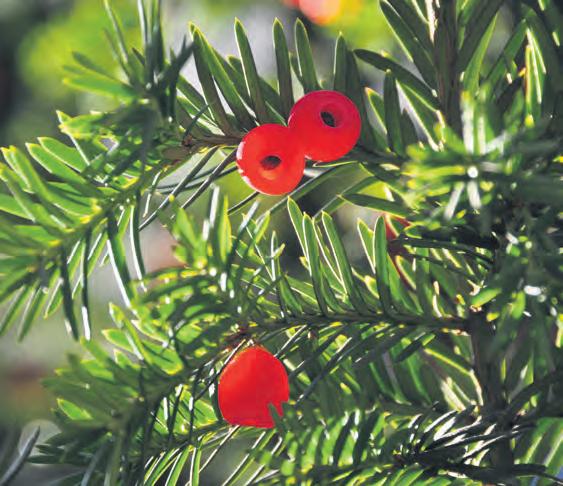
While Taxus baccata remains the commonly used species, several cultivars offer variations in form and colour:
• ‘Fastigiata’ (Irish yew): Upright, columnar habit, ideal for vertical accents or narrow spaces.
• ‘Semperaurea’: Golden foliage providing colour contrast in formal plantings.
• ‘Repandens’: Low, spreading form suited for ground cover or informal borders.
• Taxus × media ‘Hicksii’: Hardy hybrid with upright growth and abundant red berries, popular in colder climates.
• ‘Dovastonii Aurea’: Gracefully spreading habit with golden highlights.
Selecting the right cultivar depends on the intended use—formal hedge, ornamental specimen, or artistic topiary.
There is something profoundly peaceful about a winter walk. When the rush of summer fades and the golden leaves of autumn have long since fallen, the countryside seems to pause and breathe. The air is often cool and sharp, and it is a time when the landscape, stripped of its leafy excess, reveals its bones — the architecture of trees, the shape of hedgerows, the slow meander of streams. And yet, amidst this hushed stillness, there is a delight waiting to be found: the first flowers of the year, the snowdrops Snowdrops, the modest heralds of spring, bring a delicate beauty to winter’s landscape. Their white, nodding blooms pierce the frost-hardened soil, offering a promise of renewal when the world seems asleep. To visit a garden where snowdrops bloom is to step into a quiet celebration — subtle, pure, and filled with hope. Unlike the flamboyant displays of later months, snowdrop gardens whisper rather than shout. They invite you to slow down, to look closely, to notice the intricate patterning of each petal and the soft green markings that adorn their inner cups.
Many gardens open their gates especially for ‘snowdrop walks,’ a cherished tradition in Britain and beyond. Places such as East Lambrook Manor and Kingston Lacey in Somerset, Colesbourne Park in Gloucestershire, and Welford Park in Berkshire are famed for their carpets of galanthus. To stroll through these gardens on a crisp February morning is to be immersed in a world transformed. Paths lined with bare trees suddenly burst into brightness as the ground glows white beneath them. The sight is almost as if the last snowfall has taken root and begun to bloom.
What makes these walks so delightful is not only the beauty of the snowdrops themselves but the entire sensory experience that surrounds them. The crunch of frosted leaves underfoot, the smell of woodsmoke carried on the breeze, the distant call of a robin or the chatter of a wren — all combine to create a deep sense of seasonal harmony. A steaming thermos of tea sipped on a bench overlooking a frosty meadow can feel like the height of luxury. Winter walking reminds us that joy need not be loud or lavish; it often lies in small, quiet pleasures.
Snowdrops also invite a touch of wonder. Their Latin name, Galanthus nivalis, means ‘milk flower of the snow,’ a fitting title for a plant that defies the cold and blooms when few others dare. Gardeners and plant enthusiasts delight in the subtle differences between varieties — some with double petals, some tinged with green or yellow. Collectors even speak of ‘Galanthophilia,’ a passionate devotion to these humble flowers. But even the simplest drift of snowdrops beneath a beech tree can stir the soul.
A winter walk among snowdrops is a lesson in attentiveness and renewal. It reminds us that even in the coldest, darkest months, life endures — quietly, gracefully, and full of promise. To see those small white bells gleaming against the winter earth is to glimpse the coming spring, and to feel, for a moment, that all is well with the world.

Nestled in Somerset, the charming cottage-garden of East Lambrook Manor Gardens is a winter delight for lovers of early flowering bulbs. The garden was developed by renowned plantswoman and writer Margery Fish and today remains celebrated for its extensive and varied collection of snowdrops (genus Galanthus). The prime time to visit is throughout February. During this month the garden hosts its annual ‘Festival of Snowdrops’, showcasing over 140 different varieties of snowdrop, from the familiar to the rare and collectible. The gardens re-open in February until the end of the month, open Tuesday to Sunday (closed Mondays), typically from 10 am to 5 pm. Walks down ‘The Ditch’ and the woodland garden reveal carpets of the white nodding blooms nestled between early hellebores and emerging perennials.

Visitors will find the snowdrops both naturalised in the ground and displayed in raised beds and pots so that rarer cultivars are clearly labelled and easier to appreciate. Alongside the snowdrops there is a small plant nursery onsite offering many of the varieties for sale. Don’t forget the hellebores, many will be flowering along with the snowdrops and there will be hellebores and other spring ephemerals for sale. It’s a particularly good outing for photography, enthusiasts of cottage-garden style and anyone who enjoys the delicate spectacle of late-winter colour. Adults: £7; Children under 16: free. Visit early in February to catch the display at its best before later spring bulbs take over. As the weather changes the ground can be damp underfoot, so suitable footwear is recommended.
www.eastlambrook.com
East Lambrook Manor Gardens, Silver Street, East Lambrook, South Petherton TA13 5HH.
Downstream Dorset, River Tales and Local History is a fascinating book for anyone who loves walking through Dorset’s beautiful countryside or visiting its villages and towns.
Whether walking, cycling or driving through Dorset, you may wonder which river you can see on your travels. If you know the name of the village, Downstream Dorset can identify the stretch of water for you; each chapter is devoted to a different river or stream and the settlements nearby. Lesser-known tales and gems from Dorset’s rich history are revealed by Mary van Coller in her inspiring and colourful exploration of Dorset.
Published by Spiral Publishing Ltd, Downstream Dorset is just £22.95 from local shops and garden centres, or order online (+p&p) from www.downstreamdorset.co.uk or www.spiral-books.com
Twenty per-cent is donated to the Dorset and Somerset Air Ambulance.
Looking for an entertaining and interesting speaker for your local group? See Mary’s website for more details.




Whatever the weather, wrap up warm and enjoy the first delicate signs of spring in a National Garden Scheme Garden. A total of 120 snowdrop gardens and others bejewelled with spring flowers will open their gates offering galanthophiles, curious horticulturalists, plant hunters and those looking for garden inspiration the perfect opportunity to enjoy drifts of delicate snowdrops and delightful dolly mixtures colours of crocuses, iris, hellebores and more. With warming refreshments and the chance to buy plants these open days are the perfect start to the garden visiting season and offer a real tonic after the long dark days of winter.
www.ngs.co.uk
The historic home of snowdrops in the heart of the Cotswolds, home to 250 named varieties. Open weekends in February to visitors and self-guided coach groups, both are also able to arrange pre-booked weekday guided tours. All coaches are required to book visits in advance. Colesbourne Park is well signposted on the A435 halfway between Cheltenham and Cirencester.
Contact details for more information: Telephone: 01242 870264 Email: hwg@colesbourne.net

For timed entry tickets please visit: www.colesbournegardens.org.uk




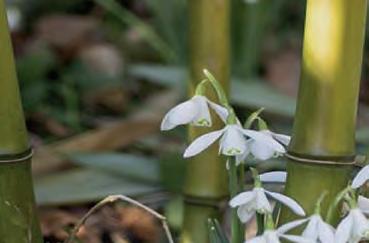











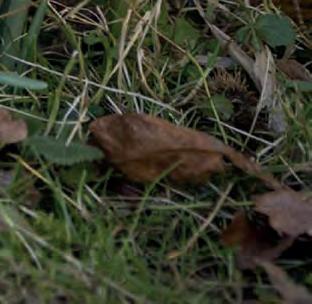
Enjoy a winter stroll along the myriad gravel paths of The Picton Garden at the foot of the Malvern Hills and admire the collection of more than 350 different snowdrop varieties. The impressive collection is a mix of big swathes and smaller clumps that you can get up close to and combined with lots of other plants selected for late winter interest, from fiery cornus stems to delicate lilac crocus and of course the fresh green of the winter green ferns, polypodiums.
In the adjoining Old Court Nurseries many of the plants you see in the garden can be purchased to start your own winter garden.
Old Court Nurseries, Walwyn Road, Colwall WR13 6QE
Tel: 01684 540416
www.oldcourtnurseries.co.uk
An RHS partner garden with a Grade 1 listed medieval priory backdrop. A mix of classic and modern features, including a ‘hot’ border, sub-tropical walk, blue garden, Mediterranean garden, shade border, Southern hemisphere and a winter garden.
Home to Somerset’s only botanical glasshouse, featuring hundreds of different species from around the world such as the magnificent jade vine (Strongylodon macrobotrys). There’s also a gift shop, tearoom and specialist plant nursery; plants are propagated onsite and sold at great prices!
Open Tuesday to Sunday, 10am to 3pm/4pm/5pm (seasonal), yearround excluding two weeks at Christmas. Last admission to the gardens is one hour before closure. The Walled Gardens holds a variety of events and special offers throughout the year suitable for all age groups. Please check the website for further information.
Email: walledgardens@ucscollegegroup.ac.uk
Tel: 01278 655042
Church Street, Cannington TA5 2HA



Now is the perfect time to explore the newly imagined Winter Garden at the popular RHS Rosemoor in North Devon, created by award winner designer Jo Thompson, where structure, bark and silhouettes take centre stage. Carefully aligned to the low angle of the winter sun, light catches on bark, branches and frosted seedheads to create moments of magic and atmosphere. Frost and low light reveal the sculptural beauty of stems and seedheads, while a palette of silvers, russets and greens creates a sense of quiet vibrancy. Established trees bring instant scale and atmosphere while drifts of grasses and herbaceous planting weave through the landscape, their soft movement catching in the winter sun. You can also explore the Winter Sculpture Exhibition throughout the gardens open until Saturday 31st December.
Visit the celebrated plantswoman and gardening writer
Margery
Snowdrop Ditch
Save the Date: Celebration of Snowdrops; daily guided walks starting at 12 noon Monday 2nd to Friday 13th February (max 20 people on a first come first served basis).
RHS Garden Rosemoor, Torrington EX38 8PH


Wander through 60 acres of breathtaking winter scenery at Batsford Arboretum. Enjoy the delicate fragrances of winter-blooming plants and admire carpets of snowdrops, aconites, crocuses, and hellebores in full seasonal splendour. After your walk, unwind with a hearty breakfast, lunch, or a cosy afternoon tea at The Garden Terrace Café.
Don’t miss Batsford Garden Centre —a paradise for garden enthusiasts—where you’ll find a beautiful range of quality, affordable plants and unique gifts.
Batsford is open every day, and well-behaved dogs on short leads are warmly welcomed. www.batsarb.co.uk Tel 01386 701441
Batsford Arboretum & Garden Centre, near Moreton-in-Marsh, Gloucestershire, GL56 9AT.

Margery Fish’s cottage garden in February to
Snowdrop displays
Snowdrop sculptures
Snowdrops for sale
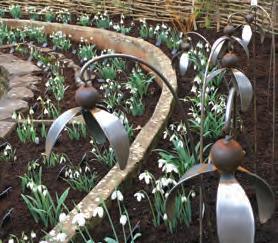
in the arboretum, browse our selection of plants and gifts and treat yourself to a delicious breakfast, lunch or afternoon tea from our café. A perfect day out for all the family – including the dog!

BatsfordArboretum@BatsfordA
Cerney House Gardens mix romance and snowdrops
Cerney House gardens is a romantic English garden. There is a beautiful secluded Victorian walled garden with an informal planting scheme. In February the gardens start the season with drifts of snowdrops throughout the snowdrop trail and rarer snowdrops are featured in the walled garden. The gardens also feature an extensive array of hellebores. Enjoy the woodland walks and nature trail. Discover the medicinal herb garden and children’s trail. Tea, coffee and homemade cakes in the Bothy tearoom. Dogs welcome. Open daily from 10am-7pm (dusk). £7 for adults and £1 children. Telephone: 01285 831300. Email: cerneyhouse@gmail.com www.cerneygardens.com
Cerney House Gardens, North Cerney, Cirencester GL7 7BX

Snowdrops are working their seasonal magic at Kingston Lacy, lifting spirits and senses with the start of the new year. Pop in to see thousands of blooms, carpeting the ground along Lime Avenue, tucked into crevices in the Fernery and peeping out underneath the towering bamboos of the Japanese Garden. Kingston
Lacy now has an enlarged and improved car park, a magnificent Rembrandt selfportrait on display in the house, and with witch hazel and camellias also flowering now in Nursery Wood, this special place is the spot to welcome the coming year. www.nationaltrust.org.uk/kingston-lacy



As featured on BBC Countryfile, the snowdrop collection at Colesbourne Park has over 250+ different varieties. Started by plant collector Henry John Elwes FRS with the outstanding Galanthus ‘elwesii’, which he found in Turkey in 1874, the collection has been greatly enhanced in recent years by great-grandson Sir Henry Elwes and his late wife Carolyn.
In February visitors can explore the gardens, woodland and lakeside paths to see huge banks of snowdrops and other winter plants. Due to popularity timed tickets are required to be purchased in advance online at www.colesbournegardens.org.uk
GIFT for LOVERS of
A colourful discovery of fascinating stories and facts, including place names
Just £22.95 from local shops and online (+ p&p)
www.downstreamdorset.co.uk or www.spiral-books.com
20% of proceeds to Dorset and Somerset Air Ambulance

Mary is currently taking bookings for talks to local groups
Cerney House Gardens A Romantic English Garden in the UK Cotswolds
Walled garden set in 46 acres of countryside * Large variety of snowdrops & hellebores * Medicinal Herb gardens * Wildlife and woodland walks * Refreshments available
Open daily, 10-7pm Admission: £7 adults, £1 children Telephone 01285 831300 www.cerneygardens.com
Cerney House Gardens, North Cerney, Cirencester, Gloucestershire GL7 7BX


Please



and
and
A
Scan the QR code to check our website for more information.

Trees are an integral part of our gardens and landscapes. We usually notice them most in their summer glory or perhaps in autumn as the leaves turn. But in winter we have a choice. Broadleaf or conifer? Deciduous or evergreen? In winter the choice is starker.
Broadleaved trees and their winter silhouettes versus evergreens with coloured foliage- it’s quite a choice.
Winter reveals a profound contrast in the garden or landscape: the sculptural austerity of leafless broadleaved trees set against the persistent green or variegated hues of evergreen trees. Choosing between these two forms—between the stripped elegance of deciduous structure and the comforting colour of evergreens is both an artistic and ecological decision. Each brings its own poetry, rhythm, and resilience to the cold season.


When the last leaves fall, broadleaved trees seem to exchange their summer fullness for a new form of beauty. Their architecture branch, bark, and bud is laid bare. These skeletal forms, traced against low winter light or mist, provide a sculptural integrity that evergreens cannot replicate. A wellplaced deciduous tree can define space in the garden as effectively in winter as it does in summer, but through structure rather than foliage. Look carefully and there is variety in the naked silhouettes of trees, the effects of branches can be as distinctive as leaves or flowers.
The silver birch is one of the most striking examples of winter character. Its smooth, gleaming white bark and fine, pendulous twigs catch every ray of light. In groups, birches lend a ghostly rhythm to the winter garden, particularly when the low sun glances off their trunks or frost outlines their twigs. The pale bark contrasts dramatically with darker evergreens, offering a sense of luminosity and airiness.
2. Acer griseum (Paperbark Maple)
This small tree offers one of the most tactile barks in the winter landscape. Its cinnamon-brown bark peels in thin, translucent curls, revealing fresh copper layers beneath. Against snow or pale grass, the tree glows with warmth, softening the severity of the season. The Paperbark Maple’s refined structure makes it a perfect choice for smaller gardens seeking both elegance and seasonal interest.
3. Fagus sylvatica (European Beech)
Although deciduous, beech often retains a scattering of coppery leaves through winter, especially on young trees or hedges. Its smooth, silvery-grey bark and long, sinuous branches create a majestic silhouette. In mature specimens, the trunk’s muscular
forms seem sculpted by light and shadow, making it one of the most dignified presences in a bare landscape.
4. Corylus avellana ‘Contorta’ (Contorted Hazel)
Known as Harry Lauder’s Walking Stick, this shrub or small tree displays an extraordinary twisted and coiled structure. In winter, its serpentine branches are like living calligraphy, best appreciated when backlit or frosted. It brings whimsy and movement to otherwise still garden scenes.
5. Salix alba var. vitellina (Golden Willow)
The willow’s bare stems, bright golden-yellow in colour, bring a vivid note to winter composition. Planted en masse by water or in damp ground, they ignite the landscape with fiery tones when sunlight pierces the grey air. Their flexible forms also create soft, sweeping gestures that contrast beautifully with angular architecture or hardscape.
6. Prunus serrula (Tibetan Cherry)



A tree of remarkable winter appeal, Prunus serrula offers shining, mahogany-red bark that peels like satin. When polished by rain or dew, it gleams as though lacquered, bringing a richness of colour that compensates for the absence of leaves. Under snow, the glowing bark offers one of winter’s most luxurious visual experiences. Together, these broadleaved examples show that leaflessness is not lifelessness. The rhythm of their branches, the play of light on bark, and the subtle colour of twigs form compositions of quiet drama. A winter garden enriched by such trees becomes a gallery of line, tone, and texture.
In contrast, evergreen trees bring continuity and colour. Where the bare bones of deciduous trees speak of stillness and endurance, evergreens suggest shelter, vitality, and constancy. They uphold the garden’s structure when all else fades, their leaves catching snow, rain, and light in enduring hues of green, blue, or gold. The choice of evergreen species can define mood cool, sombre, or jubilantly bright through winter and beyond.


3. Taxus baccata (English Yew)
)
The Scots pine is a tree of character, with rugged reddish bark and blue-green needles. In open ground, its trunk twists into sculptural asymmetry, providing both colour and form. Its ability to stand proudly in bleak landscapes has made it a symbol of resilience. Against snow or fog, its rusty upper bark warms the view.
)
Holly is one of winter’s brightest evergreens, combining glossy dark leaves with red berries that persist through the cold months. It brings both colour and wildlife value, feeding birds when food is scarce. As a specimen tree or clipped hedge, holly adds a festive, traditional spirit to winter scenes.
The yew offers one of the deepest greens in the garden. Dense, slow-growing, and dignified, it serves as both backdrop and architectural form. Its sombre colour creates a strong contrast with snow or frost, and when used in topiary or hedging, it lends the garden a timeless, formal character. Ancient yews also carry an aura of endurance and mystery.
This evergreen brings unusual winter beauty through both foliage and fruit. Its glossy leaves are joined by red, strawberry-like berries and small, urn-shaped white flowers— often simultaneously. The peeling cinnamon bark adds further texture, making it a multiseason performer that defies the idea that evergreens must be monotonous.
An evergreen tree with a distinctly silvery-blue tone, Eucalyptus gunnii brings a contemporary, luminous colour to the winter garden. Its young round leaves, fragrant when crushed, are prized for floral arrangements. In mild climates, its shimmering canopy glows against darker greens and complements modern architectural lines.


Evergreens, unlike their deciduous counterparts, maintain a sense of enclosure and protection. They give structure and colour when all else is bare. Yet overreliance on them can produce a heavy, monotonous mood. The skill lies in balance using evergreen colour to anchor the winter scene without overwhelming the delicate tracery of bare branches.
Tall and slender, the Italian cypress introduces vertical emphasis and Mediterranean formality. Its dark green spires punctuate winter skies and lend height to otherwise flattened seasonal compositions. Even in the dullest weather, these trees preserve a sense of order and refinement, reminding one of warmer climates.
In the thoughtful garden or parkland, winter beauty arises from contrast and dialogue between these two types of trees. The pale stems of birches sing more brightly when set against a backdrop of dark yew. The copper bark of a Prunus serrula glows beside the bluish needles of a pine. A golden willow reflected in winter water is intensified by the still green of surrounding hollies. The juxtaposition of structure and colour deepens the visual and emotional experience of winter.
Deciduous trees invite contemplation of form and temporality—they remind us that life persists through apparent barrenness. Evergreens offer reassurance and stability—the presence of life even in dormancy. Together they tell the full story of winter: stillness and endurance, austerity and abundance.
Ultimately, the choice between broadleaved silhouettes and evergreen colour is not one of exclusion but of complementarity. A landscape that embraces both achieves depth and year-round resonance. The bare branches of birch and beech trace the sky; the steadfast greens of yew and holly hold the earth. In their dialogue, winter’s beauty is made whole.


For many, the joy of travel is intertwined with the beauty of nature.
Gardens—whether wild or meticulously designed—offer a sense of peace, creativity, and connection to place. Across the Cotswolds and in destinations abroad, gardeningthemed holidays are flourishing, offering visitors the chance not just to admire lush landscapes but to immerse themselves in them. From English cottage borders to Mediterranean terraces, these breaks combine relaxation with inspiration, making them perfect for anyone whose idea of paradise involves a trowel and a teacup. Few regions capture the essence of English horticultural charm like the Cotswolds. Its honey-stone villages, gently rolling hills, and timeless gardens form a patchwork that has inspired gardeners for centuries. For visitors seeking a garden-themed break, the Cotswolds offers an enviable mix of famous gardens, hidden gems, and idyllic places to stay.
A visit to Bath, Highgrove, and Westonbirt Arboretum offers a perfect blend of history, culture, and natural beauty in the heart of southwest England. The city of Bath is renowned for its elegant Georgian architecture and Roman heritage..
A short drive away lies Highgrove Gardens, the private residence of King Charles III. The gardens are a masterpiece of sustainable design and personal vision, showcasing organic principles and a deep respect for nature. Guided tours offer a rare glimpse into the
meticulously curated landscapes, from wildflower meadows to classical topiary and charming water features. Nearby, the Westonbirt Arboretum in Gloucestershire is one of the world’s most magnificent tree gardens. Home to over 15,000 specimens from around the globe, it is especially stunning in autumn, when its maples and acers blaze with colour. Together, Bath, Highgrove, and Westonbirt create a rich and memorable journey through England’s heritage, artistry, and natural splendour.
If the Cotswolds are the embodiment of traditional English horticulture, then travelling abroad opens the door to entirely different expressions of garden design—each shaped by climate, culture, and creativity.
In France, Provence beckons with its lavender fields, olive groves, and terracotta pots brimming with rosemary and thyme. Garden lovers can stay in beautifully restored mas farmhouses surrounded by aromatic gardens and sun-drenched courtyards. Visits to iconic gardens such as Jardin de l’Alchimiste near Eygalières or the Jardin de la Louve in Bonnieux offer a glimpse into how Mediterranean planting combines practicality with artful beauty.
Further south, Italy’s gardens bring a sense of grandeur and history. In Tuscany, terraced gardens spill down hillsides, framing views of vineyards and olive orchards. The formal symmetry of Villa d’Este near Rome or the Renaissance charm of Boboli Gardens in Florence reveal the Italian genius for order, water, and perspective.





Looking for a floral-inspired getaway from the UK? The Bathbased tour operator Floral Tours offers a thoughtfully crafted selection of holidays tailored for flower and garden enthusiasts. With more than 26 years of experience, they specialise in bespoke trips for floristry students, horticultural societies and passionate gardeners. One highlight on their 2026 calendar is a trip to the world-
famous Keukenhof gardens in the Netherlands. Scheduled from 19 March to 10 May next year, this tour invites participants to walk through over 7 million tulips, daffodils and hyacinths spread across 32 hectares.
Departing from Bath, the trip combines floral exploration with cultural and social experiences. It’s ideal if you’re looking to immerse yourself in gardening inspiration, network with like-minded travellers, and experience Dutch spring in full bloom.
For a full holiday itinerary visit www.floraltours.co.uk
Whatley Manor is a grown-up getaway in the heart of the Cotswolds. Perfect for exploring Westonbirt Arboretum, Highgrove Gardens and Bath. Set in 12 acres of English country gardens and with a luxurious spa you can arrive and not venture far to find a soulful escape. Experience the interactive QR guided tour of the gardens, and visit the beehives where the honey is harvested in the summer and featured on the menus all year round.
The Dine & Stay package includes an overnight break and relaxing dinner in Grey’s with full use of Aquarias Spa. Rooms from £594 and based on two people. Whatley Manor & Spa Easton Grey, Malmesbury SN16 0RB Tel: 01666 822888

(and why it’s not a daft hobby)
Chris Young finds his collection of garden gnomes in the front garden of his north Devon home rewarding, nostalgic and creative -and is prepared to defend his hobby of 20 years
I’ve been collecting garden gnomes for over 20 years. The last time I ‘rounded them all up’ I had 67.
I’m not a nerd, eccentric in any way or what my son-in-law admittedly calls a ’sad case’. They adorn my Devon garden and bring pleasure to passers by.


Floral Tours are working in partnership with Country Gardener to offer readers three tailored tours for 2026:
• Keukenhof 12 - 15 April 2026
• Monet’s Garden Tour 22 - 25 June 2026
• The Delights of Yorkshire 3 - 6 August 2026
If you would like to join us on these tours, please call Pat at Floral Tours.
UK Garden Tours and Events
If you would like to organise a tour for your group we have programs for UK tours and events that we can tailor to your club preferences, if this is your choice please give us a call.
In a world increasingly dominated by digital entertainment, fast-paced lifestyles, and mass-produced everything, collecting garden gnomes might seem like a quaint or even odd pastime. Yet, for those who have discovered the quiet magic of these miniature guardians of the garden, collecting gnomes is anything but foolish—it’s deeply rewarding, nostalgic, and creative.
True at first glance, garden gnomes may appear whimsical and silly. Often depicted with red hats, cheerful faces, and mischievous poses, these small statues have long been part of European folklore, particularly in Germanic traditions. Gnomes were believed to be protectors of buried treasure and loyal custodians of the land. When placed in gardens, they were thought to bring good luck and shield the home from misfortune. So, gnomes in fact carry a cultural heritage that dates back centuries.
For collectors like myself, gnomes offer a tangible connection to this folklore—a way to honour tradition while creating a playful, personal outdoor space. What started with one solitary gnome beside a flower bed for me quickly grow into a fullblown collection, each figure contributing to an unfolding story within the garden. Some collectors create miniature villages; others arrange scenes that reflect seasonal themes or family inside jokes.
There’s also a therapeutic aspect to it all.
Stepping into a gnome-filled garden can feel like escaping into a quieter, friendlier dimension. The process of selecting, cleaning, arranging, and even repairing gnomes offers me a lot of satisfaction.
Each gnome, with its unique pose and expression, invites a moment of pause—a chuckle, a memory, or a feeling of comfort. Moreover, garden gnome collecting is a surprisingly social activity. In my years
of collecting I’ve been made aware of entire communities— online and offline— of enthusiasts who trade, discuss, and display their collections. Gnome collectors often take pride in finding rare or vintage pieces, and the thrill of the hunt— whether at flea markets, estate sales, or online auctions—adds an exciting layer to the experience. Collectors swap stories, share tips for preservation, and occasionally gather at conventions or local fairs where gnomes are celebrated with gusto. What may seem like a solitary hobby is a doorway into a whimsical community. The artistry involved in gnome collecting is often overlooked. Many gnomes are hand-painted, crafted from ceramic, resin, or concrete, and feature impressive detail and craftsmanship. Vintage gnomes, especially those made in the mid-20th century or earlier, can be genuine works of folk art. Appreciating this artistry is no less valid than admiring hand-thrown pottery or carved wooden sculptures. In fact, some gnome collections are valuable not only sentimentally but monetarily—certain antique gnomes can fetch hundreds or even thousands among serious collectors. But even beyond the history, value, and community, collecting garden gnomes brings simple joy. They are humorous, charming, and occasionally cheeky companions. Whether it’s a gnome fishing by a pond, reclining with a pipe, or mooning the neighbour’s petunias, they elicit smiles from passersby and collectors alike. So, is collecting garden gnomes foolish? Not in the slightest. It’s an art form, a tradition, and a joyful hobby all rolled into one. It brings connection—to nature, to community, and to imagination. In every painted face and whimsical stance, there’s a story waiting to be told—and I think that’s something worth collecting.

There’s a real late autumn and early winter feel to our readers seeking advice this month. If you have any queries or problems you would like help with then email us at editorial@countrygardener.co.uk

My tomato plants started off strong this year, but throughout September the bottom leaves started to turn yellow and lots of them started dropping off -making the plants look diseased. I water regularly and they get plenty of sun. Am I doing something wrong?
Susan Porter Taunton
Yellowing lower leaves on tomato plants is often a natural part of the plant maturing, but it can also indicate a few issues.

Overwatering or poor drainage is a common culprit — tomatoes like consistent moisture but hate soggy roots. Another possibility is nitrogen deficiency. Try feeding next year with a balanced tomato fertiliser, and make sure your soil is draining well. If the problem persists, check for signs of pests or fungal disease. Mulching can also help retain moisture and prevent splashback of soil-borne diseases.
My courgette plants have developed a white powdery coating on the leaves throughout the autumn. Is this harmful? What should I do?
Roger Baker
Bournemouth
That white coating is most likely powdery mildew, a common fungal issue in squash. While it’s rarely fatal, it can reduce yields if left unchecked. If it happens again remove the worst-affected leaves and dispose of them (don’t compost). Improve air circulation by spacing plants and watering at the base to avoid wet foliage. You can also spray with a homemade solution of one tablespoon baking soda, one teaspoon liquid soap, and one litre of water. Spray weekly until symptoms improve.

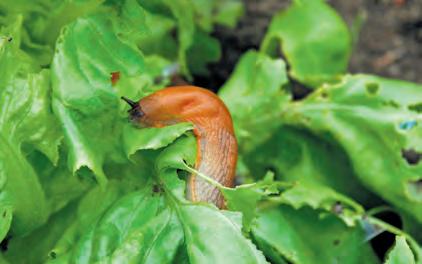
Every time I plant out new lettuce or marigold seedlings, they vanish overnight. I’ve spotted lots of slugs — how can I keep them away and by the way I am very much against using without using harsh chemicals?
Muriel Tansley, Bristol
Slugs are a persistent problem for many gardeners. And it is good that you are seeking nonchemical solutions. Try a few organic tactics:
• Create barriers using crushed eggshells, sharp grit, or copper tape.
• Use beer traps (a shallow dish filled with beer sunk into the soil) to lure and drown slugs.
• Go on evening slug hunts — they’re most active at night.
• Encourage natural predators like frogs, hedgehogs, and birds.
You can also try placing cloches over your seedlings until they’re strong enough to withstand some nibbling.
My beloved hydrangeas look fine in the morning but by the afternoon heat, they’re drooping badly. I water every morning and pay them a lot of attention— should I be doing something differently?
Clare Curtis Dartmouth Hydrangeas are notorious for wilting in the afternoon heat, even when well-watered. It’s often a defence mechanism to reduce moisture loss. If they perk up again in the evening, it’s usually nothing to worry about. To help, mulch around the base to retain soil moisture, and consider watering early morning and again lightly in the evening during hot spells. Avoid watering midday as it can scorch leaves. Deep watering (so the moisture reaches the roots) every few days is better than shallow daily watering.
I have tried growing kiwi fruits in a sunny and sheltered part of the garden for a few years now. When I bought the plants, I read quite a lot about them and was aware that I needed plants of both genders. The plants are very vigorous growers, and I have trained then against a wall, and they really do grow fast every summer. But the disappointment is there has never in five years been any blossom or fruit. Am I missing a simple trick here?
Nick Houseman Dawlish
You are right, kiwi vines are extremely vigorous and can be affected by the climate. Spring cold snaps can damage or kill the tender new shoots, thus resulting in a kiwi plant not producing. Successful kiwi production requires about 220 frost-free days. Young plants should be protected from trunk injury during cold periods. The trunk hardens as it ages and develops a thick, protective bark layer, but the juvenile vines need assistance. Lay the plants on the ground and cover them with leaves, wrap the trunks, or use sprinklers and heaters to protect the vine from frost. Also make sure you do really have male and female plants and not two of the same sex. Kiwis bear either male or female flowers but not both, so obviously you need a male plant to produce fruit. Kiwi vines can live for 50 years or more, but it takes them a little time to begin producing. They may bear a few fruits in their third year and most certainly by their fourth, but it will take about eight years for a full crop.
I planted two rose bushes this spring and they’ve grown lots of leaves but haven’t produced a single bloom which is so disappointing as they were very expensive roses. What could be the issue and is it likely to be a long-term problem with the plants?
Elaine Richards Dorchester Healthy foliage but no flowers usually suggest too much nitrogen and not enough phosphorus. Roses need a balanced feed that promotes blooming — look for fertilisers labelled for roses or blooming plants. Make sure they’re getting at least six hours of sun daily. Pruning also encourages new growth and more blooms, so trim back weak stems and spent flower heads as the season goes on. With the right care, you should see more blooms next year.

Help. My lawn is more moss than grass these days. I have always paid a lot of attention to my lawn. It is a largish one in front of the house and now looks a mess. I tried raking it out, but moss keeps coming back. What can I do this autumn, or will I have to wait until next spring?
James French Exeter
Moss thrives where grass struggles — usually due to shade, compacted soil, poor drainage, or low nutrient levels. Raking removes the moss temporarily but not the underlying cause. Aerate your lawn to improve drainage and reduce compaction. Apply a moss killer in spring or autumn, then over-seed with a hardy grass mix. It will probably be best now to address this next spring as the weather in November may not best suit the moss killer. Regular feeding and mowing at the right height will help the grass outcompete the moss over time. If parts of the lawn are deeply shaded, consider shade-tolerant groundcovers instead.
I have a potted lemon tree on my patio that I’ve lovingly cared for over the past two years. Recently, I’ve noticed the leaves turning yellow and dropping off, particularly the older leaves. I water regularly and use a general-purpose fertiliser once a month. Is this a sign of disease, or am I doing something wrong?
Laura Johnson, Ilminster
Yellowing leaves on citrus trees are usually not a disease but rather a sign of nutrient deficiency, particularly nitrogen, or overwatering.
Citrus trees are heavy feeders. A general-purpose fertiliser may not provide enough of the key nutrients they need. Switch to a specialized citrus fertiliser, which will contain the right balance of nitrogen, magnesium, and iron. Ensure the soil is well-draining and not soggy. Overwatering can cause root rot and nutrient lockout. Let the top inch of soil dry before watering again. If the tree has outgrown its pot, the roots may be cramped, reducing nutrient uptake. Consider repotting into a slightly larger container with fresh soil and good drainage.
With a few adjustments, your lemon tree should bounce back beautifully.

I read everywhere that autumn is a good time to plant trees. Right up and including November. Is that true? If so, are there specific types of trees that do better when planted in the autumn and how can I give them the best start before winter?
Annie Greene Portsmouth
Autumn is one of the best times to plant many types of trees! The soil is still warm from summer, encouraging strong root growth, and the cooler air puts less stress on young trees.
Deciduous trees like maples, oaks, and dogwoods tend to do very well when planted in the autumn Many conifers, like pines and spruces, can also be planted successfully, though they prefer a slightly earlier planting (early rather than late autumn).To give any new tree the best start plant six weeks before the first hard frost, if possible).Loosen the soil in a wide area around the planting hole to encourage root spread. Mulch well but leave space around the trunk to avoid rot. Water deeply after planting and continue until the ground freezes. Avoid fertilising now wait until spring to let the tree settle in naturally.

There’s another great selection this Christmas of specialist garden books as presents or as a treat for yourself. Here’s our personal favourites.
The Kindest Garden: A Practical Guide to Regenerative Gardening
This is a beautifully written and illustrated guide by Marian Boswall, focusing on regenerative gardening rather than just sustainable practices. It’s ideal for the garden lover who wants to make a positive ecological impact through their outdoor space. The UK’s gardening charity Royal Horticultural Society lists it among their top gift books for Christmas .
Published by Frances Lincoln, RRP £25
Grow Your Groceries: 40 Hacks for Growing Plants from your Weekly Shop
A fun, inventive title by Simon Akeroyd showing how everyday food items can become plants. Perfect for younger gardeners, windowsill growers or those new to gardening who like a quirky, accessible approach.
Published by Dorling Kindersley Ltd (DK), £16.99
A Wildflower Year: A guide to wildflowers their habitats and histories
This lovely book from popular BBC Gardeners’ World presenter Francis Tophill shares her experiences of 60 wildflowers throughout a year. She documents the story of each species, its part in human history, the place in our ecosystem, the common habitat, and finally culinary and medicinal uses. It’s an ode to wildflowers and the perfect tool for growing and identifying your own.
Published by Octopus Books, £18.99p
RHS The Garden Almanac 2026: The Month by Month Guide to Your Best Ever Gardening Year
This is the iconic monthly planner style guide produced in partnership with the RHS. Packed with tasks, planting advice, wildlife tips, and beautifully illustrated. Great for gardeners who like structure and planning.
Published by Quarto Publishing, £14.99
RHS How to Garden When You’re New to Gardening: The Basics for Absolute Beginners
A straightforward, accessible beginner’s guide from the RHS. Ideal to gift to someone just starting out, perhaps an adult learning to garden or younger adult moving into their first home with a small garden.
£7.99
RHS Fungi for Gardeners: Know Your Garden Fungi and How to Grow Them

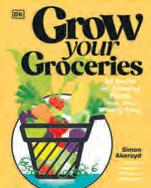



We have just moved into a Devon garden which has been neglected over the past few years, and I want to improve my garden soil over winter so it’s healthier in spring. What should I be doing now in to prepare the beds?
Shelia Bush West Sussex

Autumn is the perfect time to enrich your soil while giving nature time to do some of the work for you. Add organic matter like compost, shredded leaves, or well-rotted manure. Spread a four-inch layer over your garden beds and gently fork it in or simply let it sit as mulch for the winter. Plant a cover crop (also called green manure), such as winter rye, clover, or vetch. These crops prevent erosion, suppress weeds, and fix nutrients into the soil. Come spring, you can till them under. Mulch exposed soil with straw, leaves, or grass clippings to protect it from compaction and nutrient loss due to heavy snow or rain. Test your soil before the ground freezes—so you’ll know if amendments like lime or sulphur are needed.
By doing these simple tasks now, your soil will be healthier, more fertile, and easier to work with come spring planting.
A specialist guide focusing on fungi in the garden — identification, ecology and ways to encourage them. Great for the gardener who already has the basics and wants to explore deeper themes.
Published by RHS with DK, £12.99
Your Gardening Year What to Do When, Every Month of the Year
Similar in spirit to an almanac/guidebook, this gives month by month tasks and ideas for gardeners. Good for maintaining momentum throughout the year rather than planning big redesigns.
Published by DK, RRP £11.99
Literary Gardens: The imaginary gardens of writers and poets
Literary Gardens by Sandra Lawrence explores thirty of the most atmospheric and emotionally charged gardens in literature. From The Secret Garden and Alice’s Adventures in Wonderland to Rebecca and The Great Gatsby, these fictional gardens capture the atmosphere and emotion of the stories they belong to. Some feel peaceful or nostalgic, others are rich with mystery.
Published by Home & Garden, £19.99




Planting fruit trees in the autumn— especially bare-root varieties—is one of the most effective ways to ensure healthy, long-lasting growth. The mild temperatures, natural moisture, and dormancy period work together to give these trees the best possible start.
Planting fruit trees is one of the most rewarding ways to boost your garden, the environment, and your food supply. Significantly the best times to plant fruit trees is during the autumn months, particularly if you are using bare-root trees.
Autumn planting provides an ideal balance of soil warmth, moisture, and dormancy conditions that encourage strong root development and long-term success.
In autumn, the soil is still relatively warm from the summer sun, yet the air temperatures are cooler. This combination creates perfect conditions for root growth without stressing the young tree. While
the top part of the tree remains dormant, the roots continue to develop and spread quietly beneath the surface. This gives trees planted in autumn a head start.
Bare-root fruit trees—those sold without soil around their roots—are typically lifted from the ground during late autumn when they are dormant. This dormancy is crucial; it allows trees to be safely transplanted without damaging tender roots or new growth.
Cheaper and better survivors
Bare-root trees are usually more affordable than container-grown varieties. Without the added cost of pots, soil, and shipping weight, they are cheaper to transport and store.
For gardeners or community planting projects, this affordability allows for more trees to be planted within a given budget. Additionally, bare-root trees involve less plastic and fewer resources in their production, making them an environmentally friendly choice.
Adam’s Apples Nursery is an organic fruit tree nursery in East Devon, growing the largest range of fruit and nut trees for sale in the southwest. A traditional bare-root nursery, trees can be ordered through the year and are available for planting during the winter months. Specialising in southwest, heritage and traditional varieties, they have an extensive range across all fruit tree types, including cider apples. Collection or national delivery available. adamsappletrees.co.uk 07521 648502 sales@adamsappletrees.co.uk
Walcot Organic Nursery, located in the Vale of Evesham,will be supplying all sorts of fruit trees over the winter months. Grown in the soil, they are available bare rooted when dormant until late March – nature’s time for tree planting. Choose from a wide selection of organically-grown apples, pears, quinces, plums, damsons and more. Plant, then with a little training, look forward to enjoying delicious fruit in the future! With Christmas in mind, or at any other time, why not encourage others around you to plant some fruitful trees with a gift voucher?
Orders may be made via the website www.walcotnursery.co.uk, over the phone 01905 841587 or in person. The website provides much advice on choosing and growing fruit trees. A paper catalogue is also available.

Somerset homeowner Hanna Bradley has just wound up her first twelve months in a new garden she started late last autumn. It has been she says the hardest she has ever worked physically, and it has changed her outlook on life.
When I first stepped into the garden, it was more of a patch of tired earth and overgrown grass. It was three quarters of an acre, all at the back of our new build home.
There were a few stubborn weeds, a broken fence panel, and soil that looked like it hadn’t ever been turned. I suspect the builders had just dumped some top soil on the existing earth. Still, I saw potential. I saw the bones of something that could grow— not just plants, but food for the table. Now I can see how much the garden and I have changed.
The first task was getting to know the soil. I dug deep and found it compacted and clay-heavy, but not lifeless. Worms wriggled here and there, a promising sign. I spent weeks adding organic matter—compost, well-rotted manure, and bags of leaf mould I’d collected from the old sycamore at the back. I made compost bins from reclaimed pallets and started saving every bit of kitchen waste and garden clipping I could.
I decided on a mix of raised beds for vegetables and perennial borders for flowers. I wanted a space that was both productive and beautiful. I remember sowing my first seeds in late February under cover—kale, tomatoes, chillies, and broad beans. Each tray on the windowsill felt like a tiny promise. By April, I had seedlings to plant.
The early months were mostly humbling lessons. I overwatered, then underwatered. I planted things too close together. I underestimated the slugs. But each mistake taught me something. I learned to check the weather more closely and to go out with a torch at night to hand-pick slugs.




















My first harvest of radishes was far too spicy, but they were mine. The tomatoes ripened slowly and then all at once. Courgettes came in abundance, and I learned the rhythm of picking them small and often. Beans climbed their bamboo poles with enthusiasm, and the bees arrived in force, drawn by the lavender and borage I had sown along the borders.
Flowers became just as important as food. I grew sunflowers, cosmos, and zinnias, learning how they not only brightened the garden but also brought in the pollinators. By late summer, the garden was buzzing, both with life and with my own joy. Even the failures—a batch of carrots that forked horribly, a mildew-covered squash plant—felt like rites of passage.
Autumn and just two months ago gave me time to reflect. I planted garlic and mulched the beds with straw and compost, tucking them in for winter. I collected seeds from my favourite plants and labelled them carefully, imagining next year’s garden already taking root in my mind. I also started keeping a journal—scribbles about what worked, what didn’t, and little moments that brought joy, like the first marigold blooming in June or the robin that started following me around.
This first year has taught me that gardening is never finished. It’s an ongoing conversation between the land and the gardener. I’ve seen how much can change in a year—with attention, patience, and luck. I’ve grown food, yes, but I’ve also grown in confidence and understanding.
What do I hope for in year two? Well straighter carrots, fewer slugs, and maybe even a decent pumpkin. But mostly, I’m just looking forward to the physical joy of my own garden!
Winter may seem like a quiet time in the garden, but it’s one of the most crucial seasons for preparation, protection, and planning. Between November and February, nature slows down, but gardeners can take advantage of this pause to tidy, repair, and set the stage for the coming year. The work you do between November and February sets the stage for a flourishing spring.
Whether it’s insulating tender plants, pruning fruit trees, cleaning tools, or feeding hungry birds, every task contributes to a healthier, more resilient garden. By staying active through the colder months, you’ll greet the first signs of spring ready — with soil rich, tools sharpened and plans in place for a vibrant year ahead.
1
Before the depths of winter set in, the garden benefits from a thorough cleanup.
In November clear fallen leaves from lawns, paths, and flower beds to prevent them from smothering grass or harbouring slugs. Compost the leaves or use them to make leaf mould, an excellent soil conditioner. Tidy up old plant debris and cut down perennials that have completely died back. However, consider leaving some seed heads, such as those of echinacea or sedum, for visual interest and to provide food for birds. Throughout December and January, continue to remove any fallen branches or debris after windy weather. As the days lengthen slightly, reassess the garden structure — clear out dead material and make way for early bulbs pushing through.

3


The next few weeks provide gardeners with the ideal time to feed and rejuvenate the soil. Turn compost heaps in November to aerate them and speed up decomposition. If you have room, start a second heap so you can leave the first to mature. Spread a layer of organic matter — such as compost, well-rotted manure, or leaf mould — over vegetable beds and borders. This acts as a mulch, protects the soil from erosion, and will be drawn down by worms over the winter. Avoid digging soil when it’s wet or frozen; you’ll damage its structure. However, on dry days in rough-dig new areas, leaving the clods exposed to frost — this naturally breaks them down, creating a fine tilth by spring.
Frost, snow, and cold winds can devastate tender plants and ruin all the time love and cost you have invested in shrubs, trees and plants.
In November, move potted plants like fuchsias, pelargoniums, and citrus indoors or into a greenhouse. For semi-hardy perennials such as agapanthus or penstemons, mulch around the base with straw or bark to insulate roots. Use horticultural fleece to wrap vulnerable shrubs, particularly young or newly planted ones. In exposed gardens, windbreaks made from woven panels or mesh can make a huge difference. Check pots throughout December and January to ensure they’re not sitting in water, as frozen roots can easily kill a plant. Elevate containers on pot feet or bricks to improve drainage.
In the New Year start checking for signs of regrowth and gradually remove coverings during mild spells to prevent plants from becoming too damp or mouldy.
5
Winter is pruning season for many deciduous plants, as their bare branches make it easier to see the shape.
Before Christmas prune roses (except ramblers) to half their height to prevent wind rock. Tidy up late-flowering shrubs like buddleia, cutting them back by about a third.
From December to February, prune fruit trees such as apples and pears (but not stone fruits like cherries or plums, which should wait until summer to avoid disease). Remove crossing, dead, or crowded branches to maintain an open framework.

Hard-prune wisteria, cutting back last year’s growth to two or three buds. For deciduous hedges like beech or hawthorn, winter trimming helps maintain a neat shape before nesting birds arrive in spring.
6
A clean, well-maintained greenhouse is invaluable through the winter months.
Give the glass a thorough wash to maximize light levels. Check that heaters or frost protection systems are working and replace any damaged panes or seals.
Ventilate the greenhouse on dry, mild days to reduce humidity and prevent fungal diseases. Keep an eye on overwintering tender plants — water sparingly but don’t let them dry out completely.
After Christmas clean staging, pots, and seed trays to prepare for spring sowing. Disinfect propagators and check for pests like aphids or red spider mites that can persist even in cooler weather.
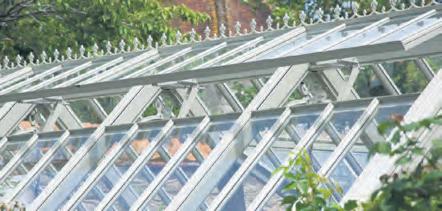
4

Don’t ignore your lawn for 12 weeks!
Lawn care doesn’t stop completely over winter — it just changes focus. From now on reduce mowing frequency, cutting only on dry days when the grass is long enough to warrant it. Keep the mower blades set high to avoid scalping. Rake up fallen leaves regularly to let light and air reach the grass. If the ground is waterlogged, avoid walking on it to prevent compaction. In December and January, aerate the lawn if drainage is poor by spiking it with a garden fork. For moss-prone areas, brush in a layer of coarse sand or grit. Come the New Year, you can begin light feeding with a lownitrogen fertiliser if the weather is mild — this helps the lawn green up gradually in spring.

Winter can be tough on garden wildlife, so it’s important to provide food, water, and shelter. Clean and refill bird feeders regularly with a mix of seeds, suet, and peanuts. Keep a supply of fresh water available, breaking any ice that forms.
Leave some areas of the garden untidy — log piles, leaf heaps, and hollow stems offer valuable winter refuge for insects, frogs, and hedgehogs.

Through December and January, avoid disturbing hibernating animals, and ensure bird baths are topped up daily.
By February, you may notice increased bird activity as they prepare to nest. Consider putting up new bird boxes and cleaning existing ones before the breeding season begins.

9
Winter is the vegetable gardener’s planning and preparation season.
In November, harvest remaining root crops like carrots, parsnips, and beetroot. Lift leeks and cabbages as needed and protect winter greens from pigeons with netting.
Prepare empty beds with compost or manure, and plant garlic and broad beans for early crops. Cover beds with cloches or fleece to keep soil workable. During December and January, check stored vegetables for rot and remove any spoiled ones. Continue harvesting winter brassicas and parsnips — they sweeten after frost.
Then start sowing early crops under cover — lettuce, radish, and onions — and chit seed potatoes in trays to encourage sprouting for spring planting.
Container plants are particularly vulnerable to freezing temperatures.
Over the next few weeks move pots close to the house or into a sheltered spot. Wrap containers in bubble wrap or hessian to insulate roots. Check that pots have good drainage — raise them off the ground on feet or tiles. Through December and January, water sparingly; plants need only enough moisture to keep roots from drying out.
Then begin feeding overwintered plants lightly with a liquid fertiliser to encourage early growth, and repot any that have become root-bound.
Winter’s relative lull makes it an excellent time for construction and repair projects.
In November and December, tackle paving, fencing, decking, or raised beds — before soil becomes too hard or wet. Paint or treat wooden structures to protect them from moisture damage.
January often offers crisp, dry days perfect for laying paths, edging lawns, or building compost bays. Check garden lighting and replace bulbs as needed.
Inspect trellises, pergolas, and supports for climbing plants — repair or strengthen them before growth resumes in spring.
Give proper attention to fruit
Fruit trees and bushes benefit from attention during dormancy.
In November, prune currants and gooseberries to an open, goblet shape. Mulch around the base with compost to conserve moisture and suppress weeds.
From December through January, check ties and stakes on young trees and replace any that have loosened in strong winds. Apply grease bands or sticky traps to prevent pests like winter moths.
After Christmas is ideal for planting bareroot fruit trees and bushes, as the soil is usually moist and roots can establish before growth begins. Also prune autumnfruiting raspberries, cutting all canes back to ground level.

Perennial borders enter their resting phase in winter, but there’s still plenty to do.
In November, cut down dead stems unless they provide winter interest or seed for wildlife.
Divide overgrown clumps of herbaceous perennials like daylilies or hostas.
Mulch borders after the first frost with compost or bark to insulate roots.
In December and January, check that stakes and plant supports are secure and not damaging plants in windy weather.
By February, early bulbs such as snowdrops, crocuses, and aconites will begin to bloom; deadhead faded flowers to prolong the display, and mark clumps for dividing after flowering.
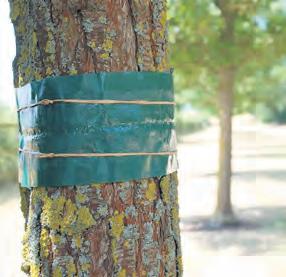
Winter provides the perfect opportunity to clean, repair, and organize your garden tools.
In November, gather everything in one place — secateurs, spades, hoes, mowers, and hand tools. Clean off soil and rust, sharpen blades, and oil moving parts.
Throughout December and January, check and service machinery such as mowers and strimmers. Replace worn cords or filters and store tools in a dry place to prevent corrosion. Your equipment will be ready for the busy spring season. A well-organised tool shed makes future tasks faster and more enjoyable.
Month-by-month action plan
NOVEMBER
• Clear leaves, tidy beds, and mulch borders.
• Move tender plants indoors.
• Prune roses and certain shrubs.
• Plant garlic, broad beans, and bare-root fruit.
DECEMBER
• Clean greenhouse and tools.
• Feed birds and protect wildlife.
• Continue harvesting hardy veg.

JANUARY
• Plan next season’s crops and garden layout.
• Prune apple and pear trees.
• Aerate lawns and turn compost heaps.
FEBRUARY
• Start early sowing indoors.
• Gradually remove plant protection as weather warms. 15
• Check structures and fences after storms.
• Repair paving or build new beds.
• Finish pruning deciduous shrubs.
• Chit seed potatoes and plant bare-root fruit.
Not all gardening stops at the back door — winter is the time to nurture indoor greenery too.
In November, move tender plants inside before frost hits. Place them in bright spots but away from direct heat sources.
Throughout December and January, reduce watering as most houseplants slow their growth. Wipe dust from leaves to improve photosynthesis and check for pests such as spider mites.
After Christmas resume feeding lightly with a balanced fertiliser as daylight increases. Repot root-bound plants and take cuttings of vigorous species to propagate for spring. 11


16
Plan, plan and then plan some more
While the garden rests, you can plan its future.
In December, reflect on the past year — which plants thrived, which didn’t, and where improvements can be made. Sketch out new layouts or border designs and research varieties to try next season.
Seed catalogues arrive around this time, so start ordering early to avoid missing out on popular choices.
Through January, plan your sowing schedule, keeping in mind your region’s frost dates. You can start labelling seed trays and preparing propagation areas.
Good record keeping now saves time and frustration later.
One genus of plants has existed virtually unchanged on earth since long before the dinosaurs. For gardeners seeking something a little unusual equisetum or horsetails offer a glimpse into a lost world.
Instantly recognisable, equisetum or horsetail is a prehistoric perennial plant which offers a fascinating glimpse into the evolutionary history of plants. Most of us would be able to find it in our garden and while some gardeners see it as a simple invasive weed, others are aware of its historic significance.
It produces a dense clump of growth and deep rhizomes, it is unwanted by many gardeners and needs regular management to control its spread.
As one of the oldest surviving plant genera, they link modern ecosystems to ancient worlds once dominated by towering forests of tree-sized horsetails. Their persistence through millions of years of climate change, extinction events, and environmental upheaval is a testament to their adaptability and resilience.
Though often overlooked or dismissed as weeds, horsetails are botanical marvels. With their unique structure, ecological importance, and ancient origins, they continue to intrigue scientists, ecologists, and plant enthusiasts alike. The genus Equisetum, commonly referred to as horsetails, represents one of the most ancient lineages of vascular plants still alive today. With their distinctive jointed stems and brush-like appearance, horsetails are botanical survivors — living relics of an ancient past. They are the only living genus in the class Equisetopsida, which once included a vast diversity of species that dominated prehistoric landscapes.
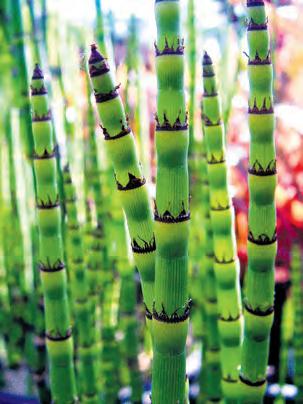

Although often viewed as a weed, horsetail does have an unusual beauty and is of interest as a ‘living fossil’, belonging to a group of plants that predate dinosaurs. Since ancient times people have used horsetail in herbal remedies to treat a range of ailments. It is also used to make an organic liquid fertiliser, with some claims that it has antifungal properties.
Horsetail has two distinct types of growth. The first type appears in early to mid-spring; these early shoots are curious-looking, light tawny brown, about 30cm tall, and easily mistaken for toadstools. Like other early plants horsetail reproduces by spores, and it is these early shoots that have spore-bearing cones (strobili) at their tips. The second type of growth appears in late spring and grows throughout the summer. These shoots are green, reaching about 60cm in height, and en masse resemble a miniature conifer forest. The stems grow in segments, producing dense whorls of needle-like branches. They die back in autumn, leaving a system of dark rhizomes and tubers underground, ready to produce new shoots again in spring.
Horsetails have an evolutionary lineage that dates back more than 350 million years, to the Late Devonian period. They flourished particularly about 359 to 299 million years ago a time when Earth’s atmosphere was rich in oxygen and swamplands were common. During this era, the ancestors of equisetum — belonging to the larger group known as sphenophytes — grew into towering trees, some reaching up to 30 metres.

These ancient plants formed dense forests and contributed significantly to the formation of modern-day coal deposits.
Unlike many plant groups that have undergone extensive radiation and diversification, Equisetum has remained relatively unchanged in form over hundreds of millions of years.
However, the smaller, more adaptable ancestors of modern Equisetum survived and eventually evolved into the species we recognize today.
Equisetum species are vascular plants, meaning they have specialized tissues (xylem and
phloem) for transporting water and nutrients. They reproduce not through seeds but by spores, like ferns and other pteridophytes.
The high silica content in their tissues also made horsetails useful to early humans for scouring pots and polishing metal — hence the nickname “scouring rush.”
Despite the ancient history of the genus, only about 15 to 20 species exist today. These are broadly classified into two groups: the subgenus Equisetum (also known as ‘true horsetails’) and subgenus Hippochaete (commonly known as ‘scouring rushes’). The key difference lies in the appearance and behaviour of their stems.
It isn’t necessary to get rid of horsetail. When growing among trees, shrubs, or vigorous herbaceous perennials, horsetail won’t cause any significant competition and its presence in parts of the garden increases biodiversity and provides shelter and food for several invertebrates.
Many gardens contain horsetail, and it doesn’t necessarily make a garden less attractive or an allotment less productive, so long as its spread is managed. For example, some areas of RHS Garden Wisley contain horsetail. It is managed by hand pulling all the green stems in June, with a second weeding session in late summer to remove regrowth. This approach controls the horsetail enough for other plants to grow and produce an impressive display of flowers.
However, as its green stems can form dense ground cover from late spring to autumn, it is a good idea to control the growth of horsetail in parts of your garden where it might smother and outcompete seedlings, or smaller and less vigorous plants.
Horsetails often play a significant role in wetland ecosystems, helping to stabilize soil and filter water. Their rhizomes help prevent erosion along riverbanks and wetlands, and they provide habitat for small aquatic creatures.
However, some species, particularly E. arvense, are known to be invasive. Once established, their rhizomes can make them difficult to remove, leading to their classification as problematic weeds in some agricultural areas.
In traditional medicine, especially in Europe and Asia, horsetail extracts have been used for their diuretic and wound-healing properties.
However, the plant’s high levels of certain alkaloids mean that excessive consumption can be toxic.
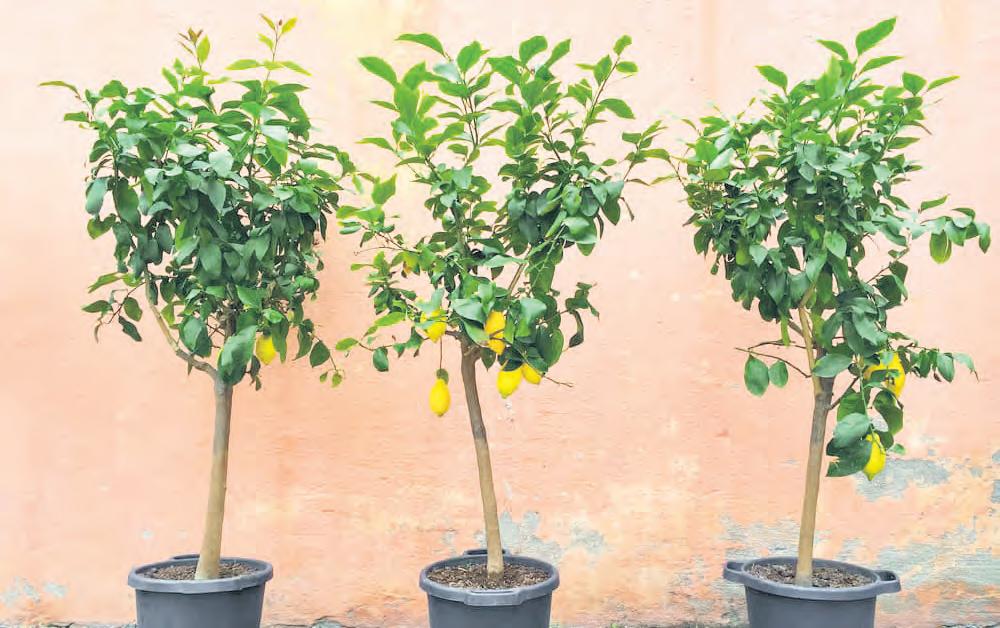
With the advent of a host of miniature rootstocks that now covers most types of fruit tree it has never been easier to cultivate fruit trees in pots. Specialist grower Adam Frazier shares his 20 years experience on what to grow and how to grow in pots

Apples, pears, plums, cherries, figs and even lemons. If you don’t have a large garden, growing your own fruit and fruit trees might seem like an impossible dream but if you have any sort of patio you can start living the dream.
Fruit always tastes better when it’s homegrown, so spend time at a garden centre or nursery deciding which fruit you’d like to grow and how many fruit trees you’ve got room for.
As your trees are restricted to containers they are going to need love and attention to bear the best fruit. Add a good feed or fertiliser which is high in potassium in spring and summer.
Protect your tree and any early blossom against frost and very harsh winters and check whether or if you need other plants to help pollination.
You’ll also need to water your patio fruit trees daily, so keep a careful eye on the containers particularly during the growing season and hot weather.
With gardens growing ever smaller the increased yield and the diversity of the crops that can be grown there is valuable. Plus it is far easier to protect the fruits from pests when grown nearer to the house.
Choose a size of container that is right for the crops you are growing. Most fruit trees on miniature rootstocks will require a container not less than 18 inches in depth and circumference. Resist the urge to over-pot by using extra-large containers. If the container is too big the compost will go stale and airless before the roots have a chance to penetrate it.
Absolutely any type of container is suitable. Terracotta is the most aesthetically pleasing plastic and is perfectly acceptable as are wooden barrels. The compost we would recommend for trees is soil-based compost such as John Innes no 2.
Remember that during the summer even if it has rained it may still be necessary to water by hand because the area of compost exposed to the rain is relatively small and the foliage canopy often stops most the rain from penetrating. Plants and trees in pots need more water because the compost heats up much more than the soil in the ground does.
Apples on the M27 rootstock make picturesque naturally miniature trees that look like perfect scaled down miniature orchard trees. Crops can be very heavy – up to 30lbs per tree when fully established, and they yield early in life too, often from the first season. The fruits tend to be larger than they would normally be too and maintain the genuine characteristics and flavour of the variety chosen. A good choice would be ‘Limelight’, ‘Greensleeves’, ‘Saturn’, ‘Redsleeves’, ‘Red Falstaff’, ‘Hereford Russet’ and ‘Red Windsor’.
There is one number one choice for a pear tree on the patio and that is ‘Concorde’. It is a naturally compact little tree that is self-fertile and heavy yielding. Its flavour is sweet and moreish and the many fruits ripen from early October. Pear blossom is very early and the most prone to late frost damage and it is also more convenient to grow some fleece or sheeting over the tree if the night threatens to be cold.
Most gardeners consider the concept of their very own dwarfing ‘Victoria’ plum –considered the queen of all plums – in a pot on the patio as the ultimate gardening joy. ‘Victoria’ itself ripens mid-late August; ring the changes with the useful little ‘Opal’ which ripens much earlier from late July. You may have a desire for an old fashioned damson tree, the fruits of which are blessed with an intense flavour. Damsons are hardly ever available to buy in the shops.
The new ‘Gisele’ 5 rootstock has revolutionised the growing of cherries. The first reliable and genuinely dwarf/miniature stock for cherries has ensured that these most delectable of fruits are brought into the realms of patio growing. ‘Gisele’ loves being cultivated in a pot; within only two years these precious and fast-maturing little trees become laden with boughs dripping with the most tempting fruit! It’s got to be worth cultivating a Morello!
These fruits were just made for the patio. Not only are they rather attractive with early large rose pink blossom but they are naturally compact as well and probably at their best when grown in containers. There is a preconception that they might be tender but they are entirely hardy. Peaches and nectarines are precocious, almost invariably yielding the first summer following planting. You will be genuinely amazed at the difference in texture and flavour between your own home-grown produce and those you buy in the shops.
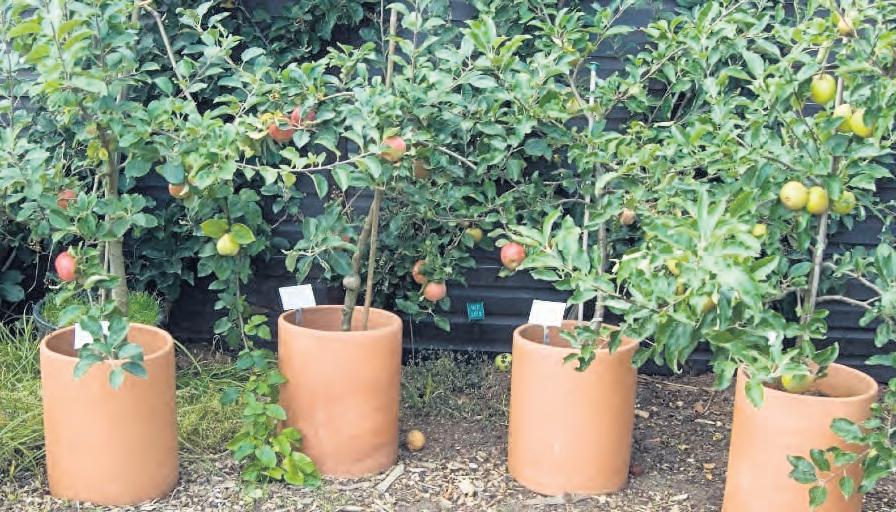


Very slow growing trees of character, they adapt very well to container growing. The large fringed leaves are attractive and turn to rich golden amber in the autumn and the trunk becomes fissured and textured as it ages. As the fruits of mulberry trees will attract the neighbouring blackbird population like a magnet the trees are much easier to keep an eye on when grown close to the home and the trees much easier to net when grown in a container.
Love being restricted in a container and crop more heavily because of it. They are so attractive with their attractive large lobed leaves, extremely easy and undemanding, and will crop virtually from the word go. The later fruits will ripen fully in the autumn with the benefit of a warm sunny patio. All varieties are suitable. ‘Brown Turkey’ is always considered the most prolific.


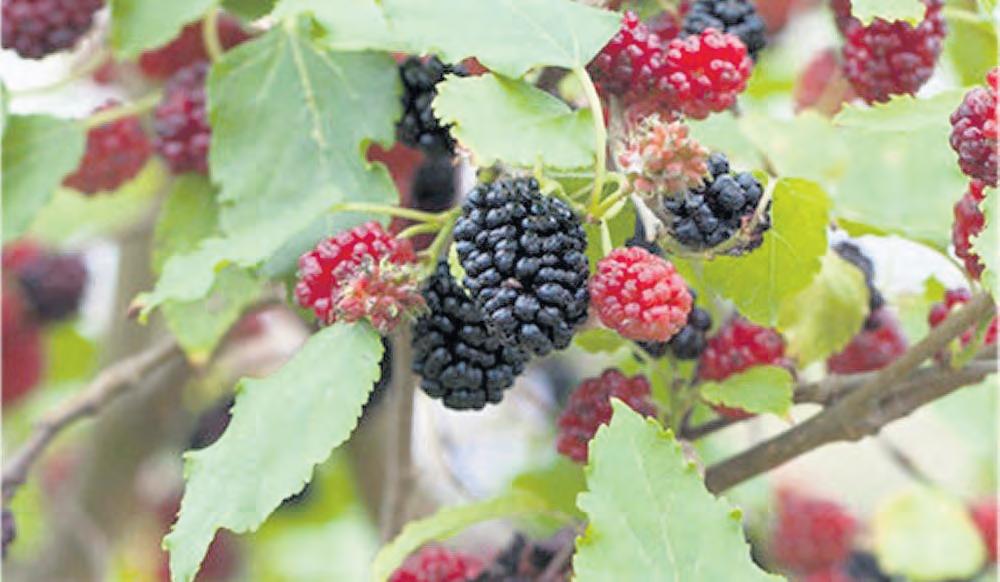


Late blight of tomatoes has again been an ongoing problem for many gardeners this growing season. How does it spread and what can be done to reduce the severity of the disease?
Blight is the most devastating disease affecting outdoor tomatoes and one only too familiar to growers. The plant pathogen responsible is fungus like Phytophthora infestans which belongs to the taxonomic group commonly described and water moulds. As well as infecting tomatoes with what gardener’s call ‘late blight’ P infestans is notorious for causing foliar and tuber blight in potatoes which was the cause of the Great Famine in Ireland from 1845 to 1849.
Tomato blight is a term that refers to several fungal and fungal-like infections that can devastate tomato crops, affecting leaves, stems, and fruits, often leading to total yield loss. Understanding the causes of tomato blight, its impact on fruit, and effective control strategies is crucial for gardeners, farmers, and agricultural professionals alike.
Blight is a general term used to describe plant diseases that result in rapid browning and death of plant tissue, typically caused by pathogens. In tomatoes, blight usually refers to two main diseases:
Early blight – caused by the fungus Alternaria solani
Late blight – caused by the oomycete Phytophthora infestans, the same organism responsible for the Irish potato famine.
Both early and late blight can severely damage tomato plants, but they differ in their appearance, timing, and aggressiveness.
Early Blight (Alternaria solani)is a fungal disease that typically appears early to midseason. It thrives in warm, wet, or humid conditions and can overwinter in the soil or on plant debris.
Key contributing factors are poor garden hygiene (e.g., unremoved plant debris) or Infected seeds or transplants. High humidity and prolonged leaf wetness and significantly overhead watering, which splashes soil onto lower leaves.
The symptoms of early blight include small brown spots on leaves with concentric rings (like a target or bullseye pattern). These spots enlarge and may cause leaf yellowing and drop.
Dark, sunken lesions often appear at the base of the plant or where leaves meet the stem. Early blight can cause black sunken spots near the stem end. These spots can expand and render the fruit inedible.
Welcome to the Winter edition of Time Off - events over the next few months throughout the Cotswolds. When Country Gardener returns for a new growing season with our March edition we will launch a new service for readers giving details of local gardening events throughout our circulation area known as Events & What’s On. To promote your event we will ask you to complete online form with the event details. It’s a service which we hope will become popular and a focal point for people seeking gardening events. The new system launches on 1st December on www.countrygardener.co.uk

There are no chemical controls for blight available to home gardeners. The only control is good hygiene and resistant cultivars.
CHOOSE RESISTANT VARIETIES
Many tomato cultivars are bred for resistance or tolerance to early and late blight. While no variety is completely immune, choosing blight-resistant strains can dramatically reduce risk.
Examples include:
‘Mountain Magic’ (late blight-resistant cherry tomato)
‘Iron Lady’ (resistant to both early and late blight)
‘Defiant’ and ‘Plum Regal’ (late blightresistant hybrids)
PRACTISE CROP ROTATION
Avoid planting tomatoes (or other nightshades like potatoes, peppers, and eggplants) in the same location each year. Rotate crops every three to four years to disrupt disease cycles and reduce pathogen build-up in the soil.
IMPROVE AIR CIRCULATION AND DRAINAGE
Space plants appropriately to allow for airflow.
Prune lower leaves to avoid contact with soil.
WATER WISELY
Water at the base of plants, avoiding overhead irrigation.
Water early in the day to allow leaves to dry before nightfall.
DISPOSE OF INFECTED PLANTS
PROPERLY
Never compost blighted plants. Instead bag and trash them; burn them (if local laws permit); bury deeply away from garden areas.
Proper disposal is key to preventing overwintering of spores and future outbreaks.

November 13TH
Cheltenham Horticultural Society AGM & QUIZ Details 01242 691135 19TH
Clevedon Gardeners’ Club ‘COTTAGE GARDENS’ - CLAIRE GREENSLADE clevedongardeners@gmail.com
Winchcombe Gardening Club ‘COMPOSTING’ - WENDY ROWLEY Details 07836 297168
December 9TH
Slimbridge Gardening Club CHRISTMAS SOCIAL www.slimbridgegc.plus.com 10TH
Hardy Plant Society (Wilts & Avon Group) ‘THE NATIONAL GARDEN SCHEME’ Ros Ford -Wiltshire County Organiser of NGS Biddestone Village Hall 2pm. Details from wilts@hardy-plant.org.uk 11TH
Cheltenham Horticultural Society CHRISTMAS FLOWER ARRANGEMENTS & BRING AND SHARE SUPPER Details 01242 691135 17TH
Winchcombe Gardening Club ‘“BERRIED” TREASURE’ - DUNCAN COOMBS Details 07836 297168
7TH
Clevedon Gardeners’ Club ‘GARDENING IN SMALL SPACES’MATTHEW SYMONDS
Details: clevedongardeners@gmail.com
21ST
Clevedon Gardeners’ Club ‘LAVENDER - THE FORGOTTEN HERB’ - BAZ HAMBLIN
Details: clevedongardeners@gmail.com
February 4TH
Clevedon Gardeners’ Club ‘AUTUMN COLOUR & INTEREST IN THE GARDEN’ - DUNCAN COOMBES
Details: clevedongardeners@gmail.com
18TH
Clevedon Gardeners’ Club ‘CREATE A GARDEN TO BE PROUD OF’ - CATHERINE WILLIAMS
Details: clevedongardeners@gmail.com 28TH
Clevedon Gardeners’ Club SPRING FLOWER SHOW, CLEVEDON COMMUNITY CENTRE
Details: www.clevedongardeners. chessck.co.uk

In the depths of winter, the quiet charms of plants with strikingly attractive bark come into their own. Textures and stem colours attract the eye, as the bark provides style and dramatic contrast. Here’s three which all have the RHS Award of Garden Merit- the societiy’s highest plant accolade.

Luma apiculata commonly known as the Chilean Myrtle, is a striking evergreen tree or large shrub native to the temperate forests of Chile and Argentina. It belongs to the myrtle family (Myrtaceae) and is particularly admired for its distinctive bark, which is arguably its most captivating feature. The bark peels away in thin sheets to reveal a smooth, polished surface underneath in a beautiful mosaic of cinnamon, cream, grey, and orange hues. This multicoloured, tactile bark is silky smooth to the touch and visually resembles the bark of an Arbutus (Madrone), which is why it is often used ornamentally in gardens and parks.
The peeling habit of the bark is not merely aesthetic but is also a natural adaptation to the tree’s humid native environment. By shedding bark, the tree can help reduce parasite load and fungal infections, keeping its outer layer healthy. Over time, older trunks and branches develop more prominent exfoliation, creating intricate patterns that become more dramatic with age. Its unique bark, combined with its attractive foliage and flowers, makes it a favourite among landscape designers and collectors of unusual trees.
Betula utilis, commonly known as the Himalayan Birch, is a graceful deciduous tree renowned for its exceptionally white bark. Native to the Himalayas and adjacent mountain ranges, this birch species has long been valued both for its

aesthetic qualities and traditional uses. The bark, which is its most celebrated feature, peels off in fine, papery sheets and ranges in colour from brilliant white to creamy silver, often with horizontal lenticels (tiny pores) and occasional dark fissures. The whiteness intensifies with age and exposure, making older trunks and branches especially eye-catching in contrast to their dark surroundings.
The bark has cultural significance in India and Nepal, where it was historically used as a writing material for Sanskrit scriptures. Its natural waterproofing properties also made it useful for wrapping and preserving texts. This peeling habit, typical of birch species, helps the tree shed lichen and parasites, maintaining its health in high-altitude conditions.
Betula utilis can reach up to 20 metres in height and is often planted for its striking winter silhouette and ornamental bark. It performs best in moist, well-drained soils and benefits from cool summer climates. In autumn, the foliage turns a brilliant yellow, adding seasonal interest.
Acer davidii (David’s Maple / Snakebark Maple)
Acer davidii, known as David’s Maple or more commonly as a snakebark maple, is a small to medium-sized deciduous tree native to central and western China. It belongs to the section Macrantha a group of maples notable for their striking bark, which is its most distinctive ornamental trait.
The bark of Acer davidii is smooth, olive green to dark green, marked with narrow vertical white or pale green stripes that resemble the patterns of a snake’s skin— hence the common name ‘snakebark maple.’ These stripes become more prominent with age and are particularly noticeable in the winter months when the tree’s leaves have dropped.
The bark is not only beautiful but functional—it helps the tree adapt to mountainous regions by regulating temperature and limiting the establishment of epiphytes. The tree typically grows to about 15 metres tall and has an upright, spreading habit. Its leaves are ovate to elliptical, with three barely lobed points, and turn golden-yellow or orange in the autumn, complementing the bark’s year-round appeal.
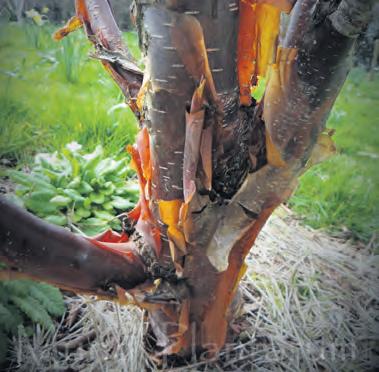


Gretton Road, Gotherington, Cheltenham GL52 9QY 01242 676722
www.gotheringtonnurseries.co.uk




Secluded cosy cabins & lodges in wooded valley running down to Wembury Bay & SW Coastal Path

Plymouth, Dartmoor & lovely South Devon Villages & Towns in easy reach. Pets Welcome. Forest School. Tel: 01752 862382 www.churchwoodvalley.com
ACCOMMODATION HOLIDAY COTTAGES
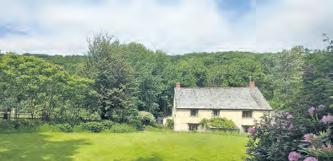
Devon Traditional Cottage Sleeps 2-4
On small farm with private woodland walks for you & your dog to enjoy. RHS Rosemoor approximately 13 miles. Tel: 01769520266 www.horrymill.co.uk Email: horrymill@aol.com
NORTH DEVON NEAR CLOVELLY. 3
delightful cottages situated in 12 acres of idyllic countryside. Sleeps 2-4. 1 Wheelchair friendly. Brochure: 01237 431324 www.foxwoodlodge.co.uk foxwoodlodge@outlook.com
CARDS & GIFTS

A range of over 200 greetings cards and prints from the flower paintings of ANNE COTTERILL We sell to both individuals and trade. No order too small. Contact us for your free catalogue.


Mill House Fine Art Publishing, Bellflower Gallery, Market Place, Colyton, Devon EX24 6JS Tel. 01297 553100 info@millhousefineart.com www.millhousefineart.com

Nestled in a beautiful ancient woodland back drop is where you can relax and unwind in a secluded small field with two shepherd huts and alfresco cooking facilities with your own campfire fire area.
For more details please contact outdore.co.uk or email woodlandwayz@gmail.com

Carmarthen Bay South Wales Seafront chalet situated on estuary. Sleeps up to 6. Seaview. Well Behaved Dogs Welcome Free of Charge. Free WIFI. Open from 1st March - 31st Dec. For Brochure Tel: 01269 862191
BOSWORLAS, ST JUST. Cosy Cottage sleeps 2-4. Please email info@bosworlas.co.uk for availability
GLORIOUS NORTH DEVON. Only 9 cosy caravans on peaceful farm. Wonderful walks in woods & meadows. Easy reach sea, moors & lovely days out. £125-395pw. Discount couples. Nice pets welcome. 01769 540366 www.snapdown.co.uk
WYE VALLEY/FOREST OF DEAN. Fully equipped single-storey cottage with two en-suite bedrooms. Wi-fi.Recently awarded Visit England 4-star GOLD. Rural retreat, shops/pubs one mile. Enquiries welcome. AS SEEN ON ESCAPE TO THE COUNTRY! Tel: 01594 833259 www.cowshedcottage.co.uk
ACCOMMODATION WITH BEAUTIFUL GARDENS

Penrice Castle Gower 17 holiday cottages on an 18th century Estate on the Gower Peninsula with beautiful Grade I listed historic park and gardens. Tel: 01792 391212 www.penricecastle.co.uk
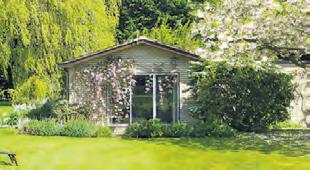
Stratford-upon-Avon Lovely self-catering cottage in peaceful location: large garden. Sleeps 2. Perfect for famous gardens, NT properties & Cotswolds. Tel: 01789 740360 www.romanacres.com
Editorial Publisher & Editor: Alan Lewis



Yenstone Walling
Stone Walling and Landscaping Patrick Houchen - DSWA member Tel: 07751278363 / 01963371123 www.yenstonewalling.co.uk
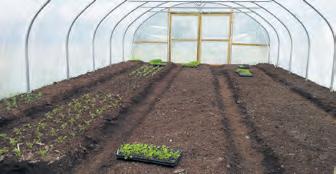
POLYTUNNELS FROM £499 AVAILABLE TO VIEW BY APPOINTMENT 01363 84948 info@ferrymanpolytunnels.co.uk www.ferrymanpolytunnels.co.uk
Cotswolds, Devon & Dorset corina@countrygardener.co.uk Tel: 01823 410098
Classifieds classified@countrygardener.co.uk Accounts and subscriptions Heather Rose heather@countrygardener.co.uk




www.fortonnursery.co.uk


&
gemma@countrygardener.co.uk









Buy a £25 Newent Plant Centre Gift Voucher and pay only £20! (Vouchers redeemable from January 2026)
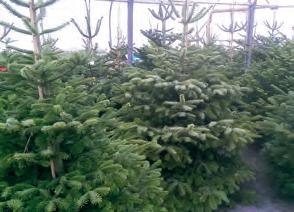
Fresh Cut Local Nordman Fir Christmas Trees all lovingly displayed in our Forest undercover

Unique individually planted arrangements and containersideal gifts

Traditional Festive Holly & Fir Wreaths or try our Natural Birch and Willow Wreaths

Hundreds of PlantsEvergreen Shrubs, Trees, Fruit Bushes, plus over 100 varieties of Heuchera - all make great gifts Our Christmas gift to


